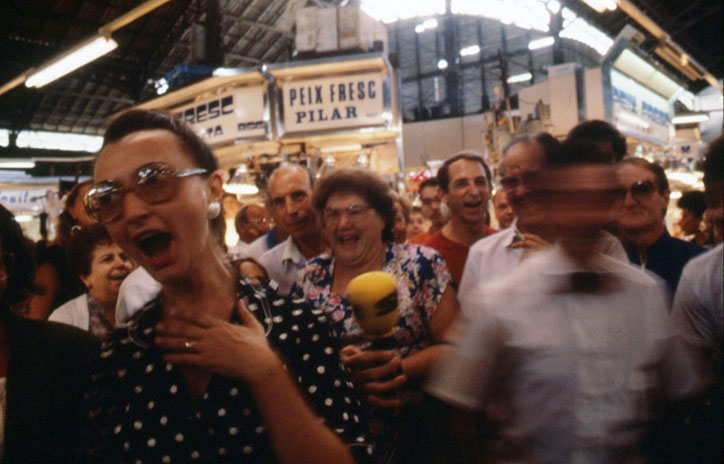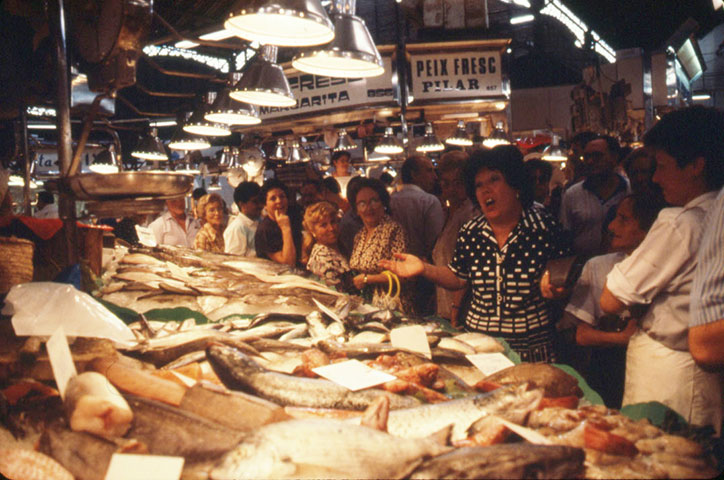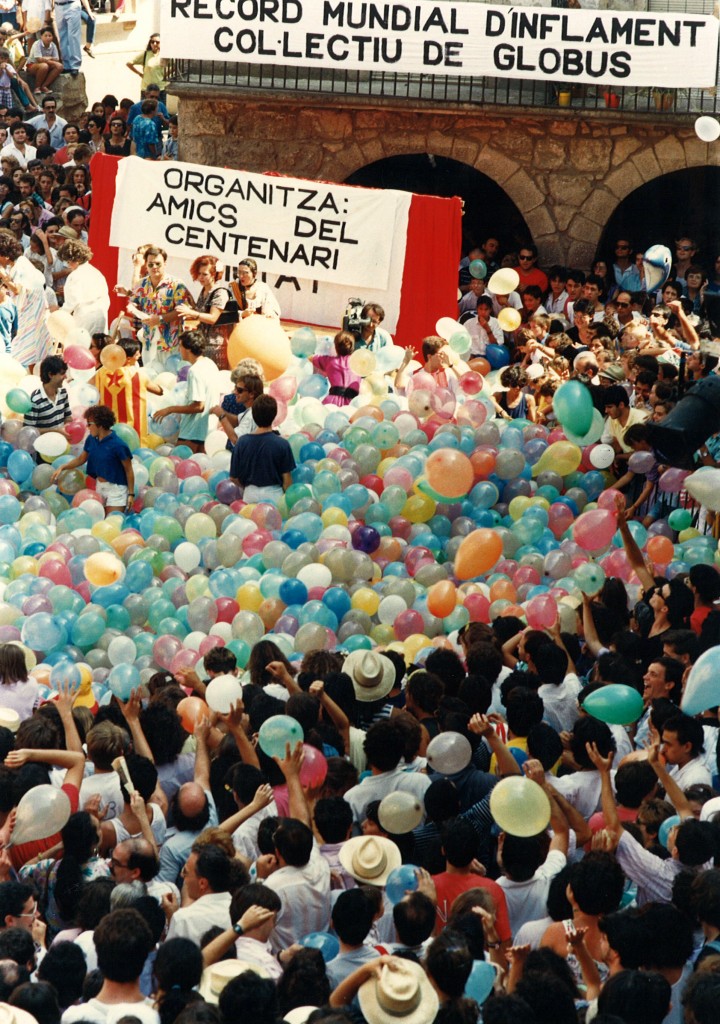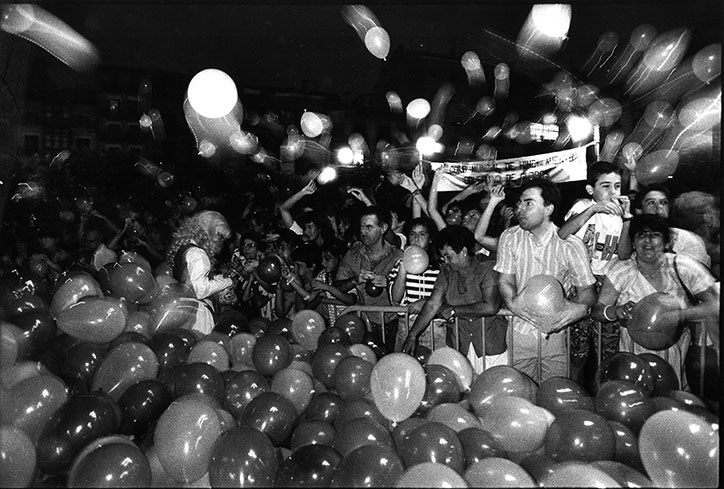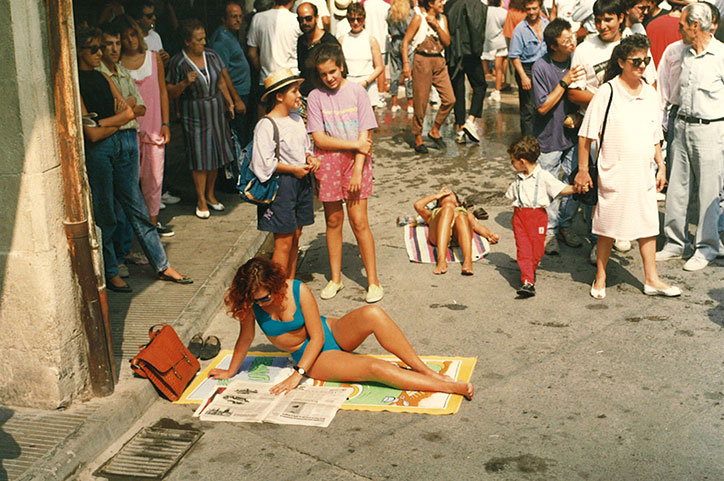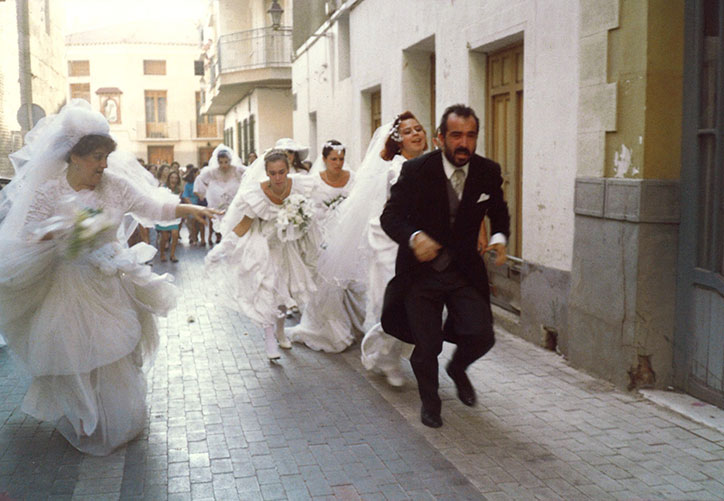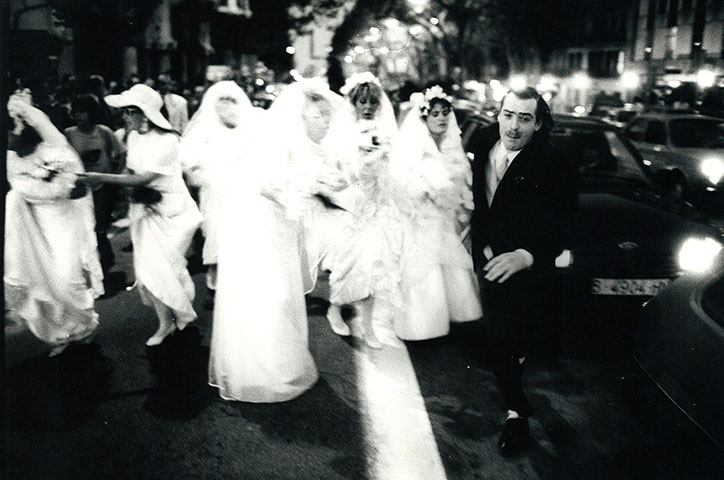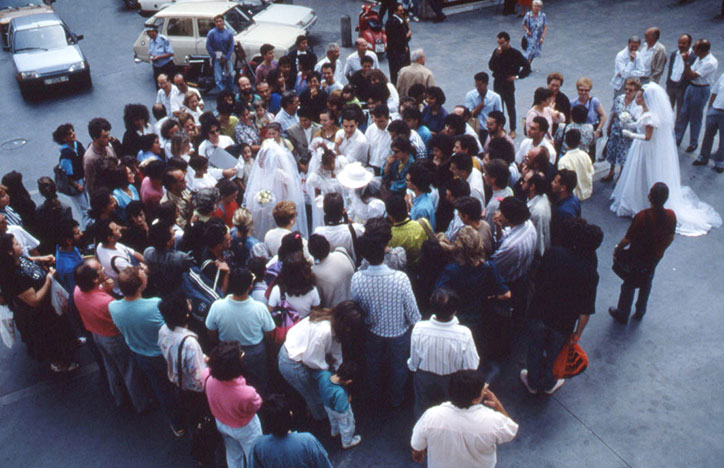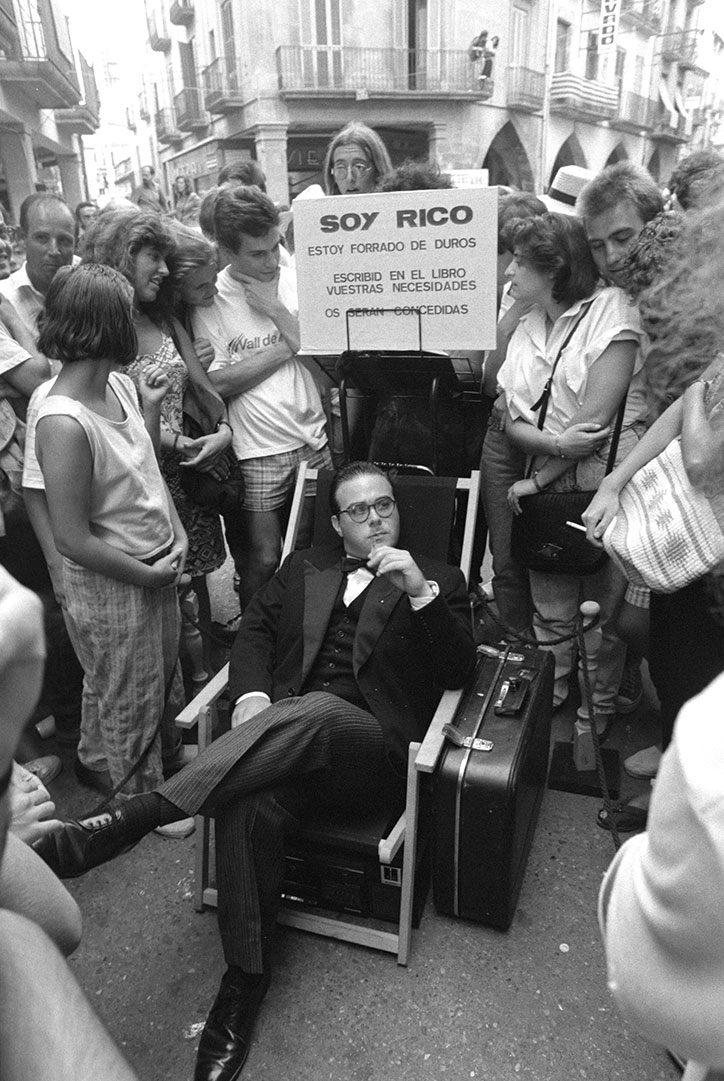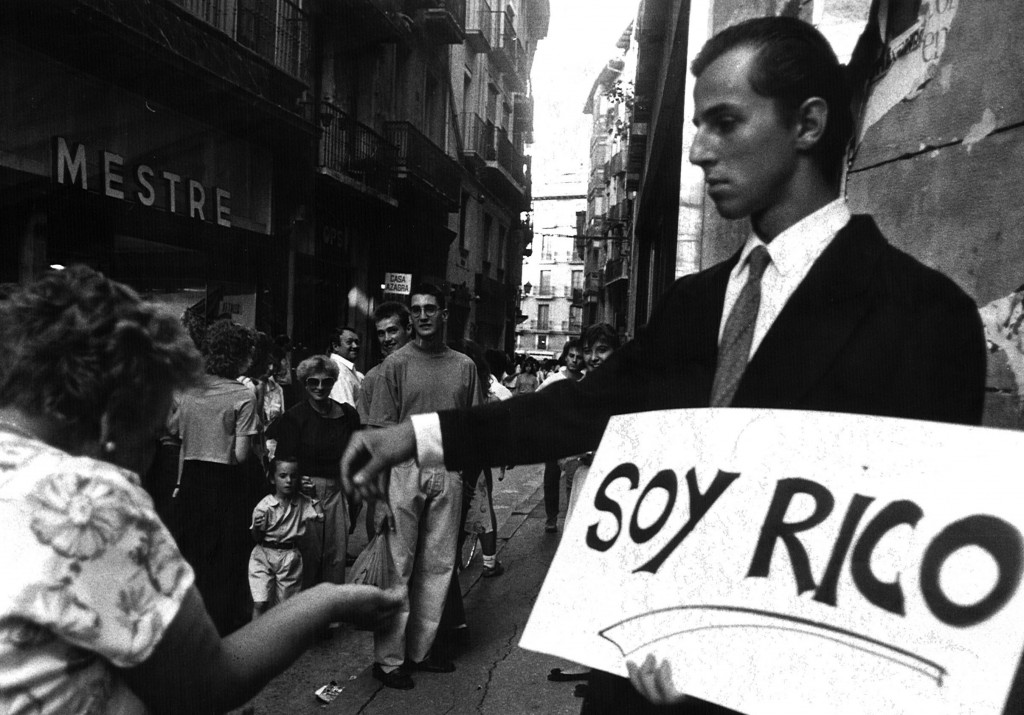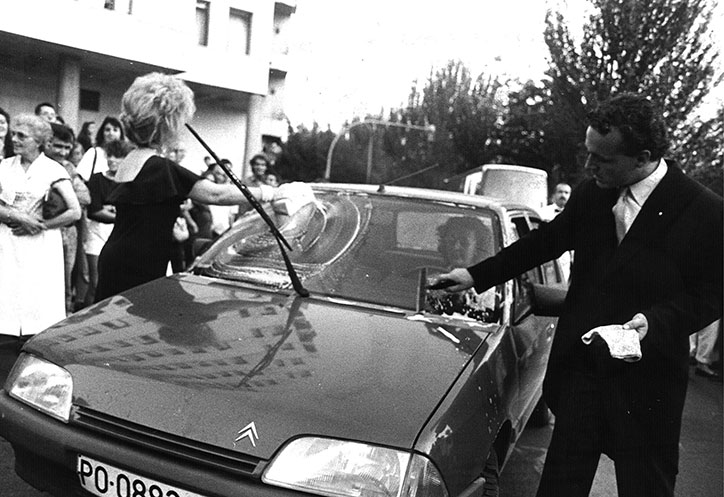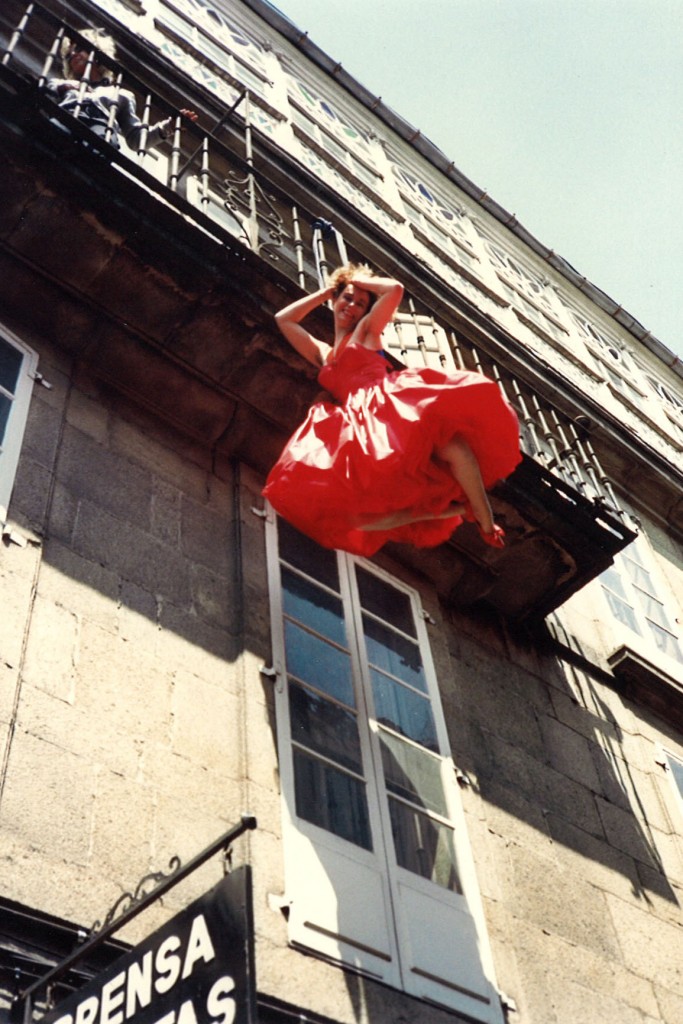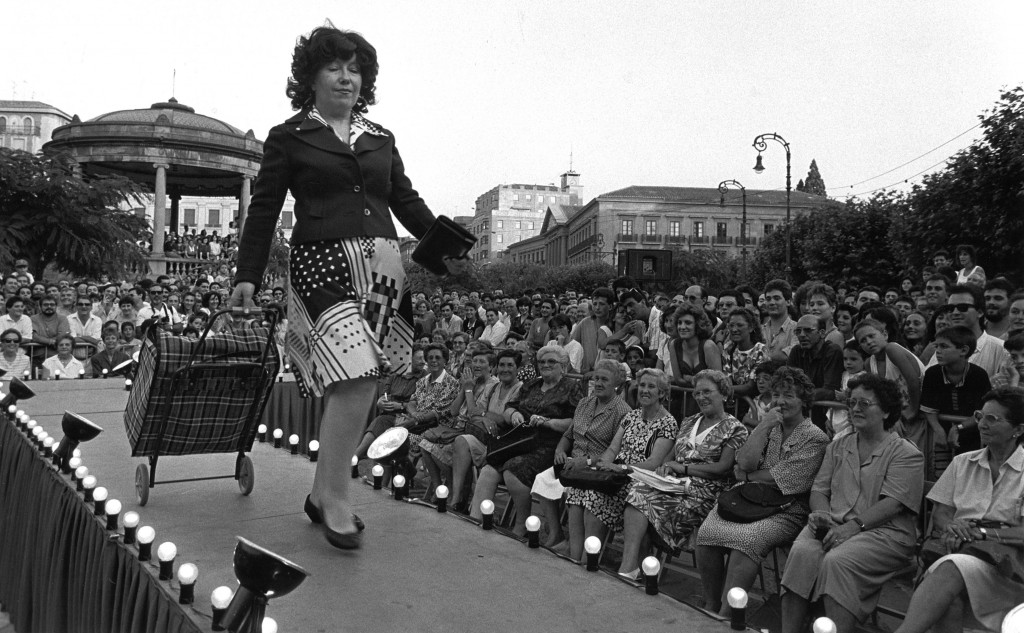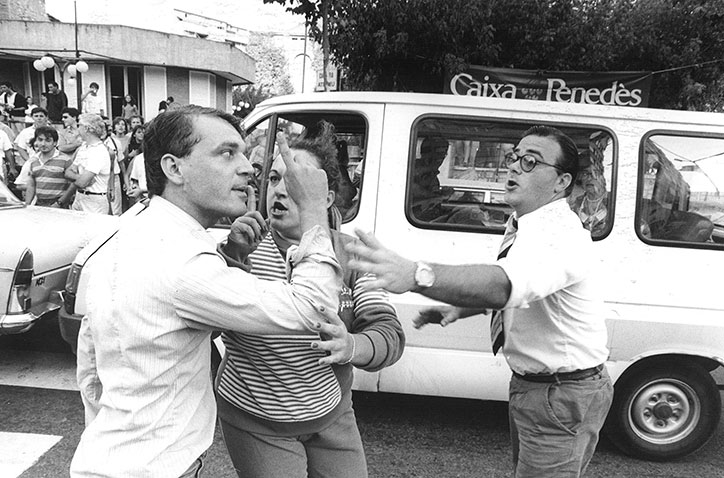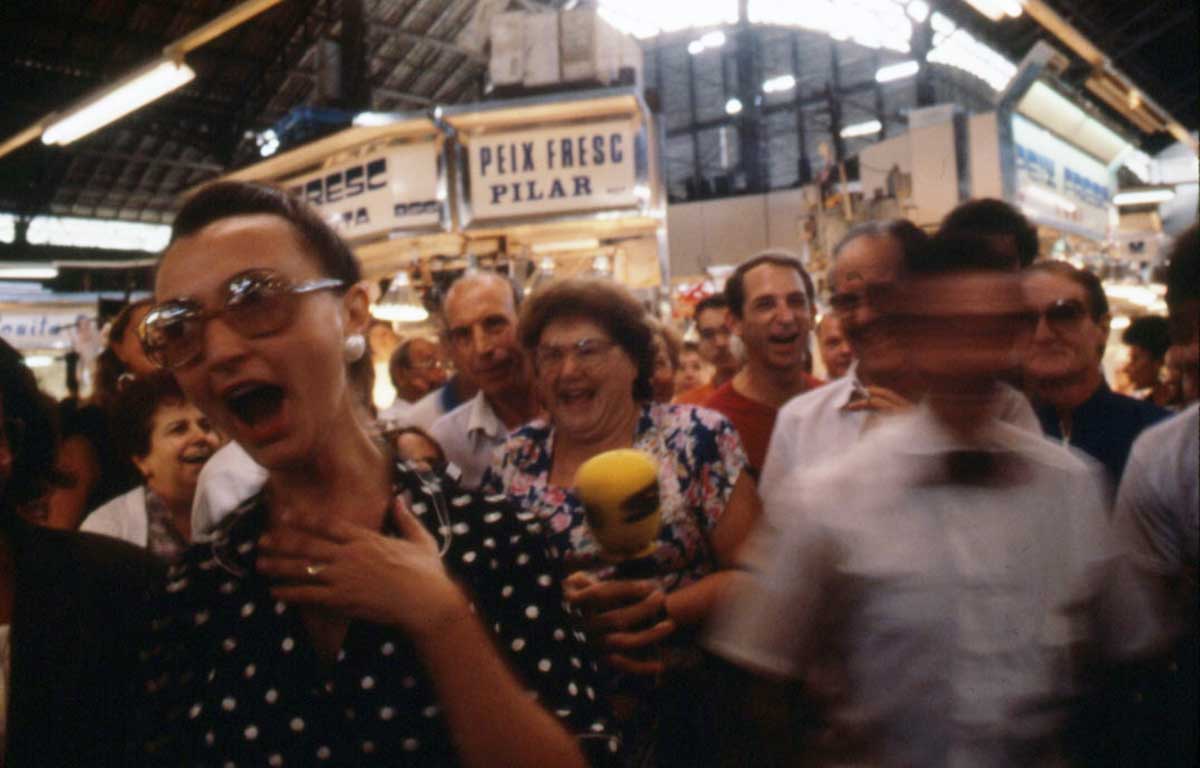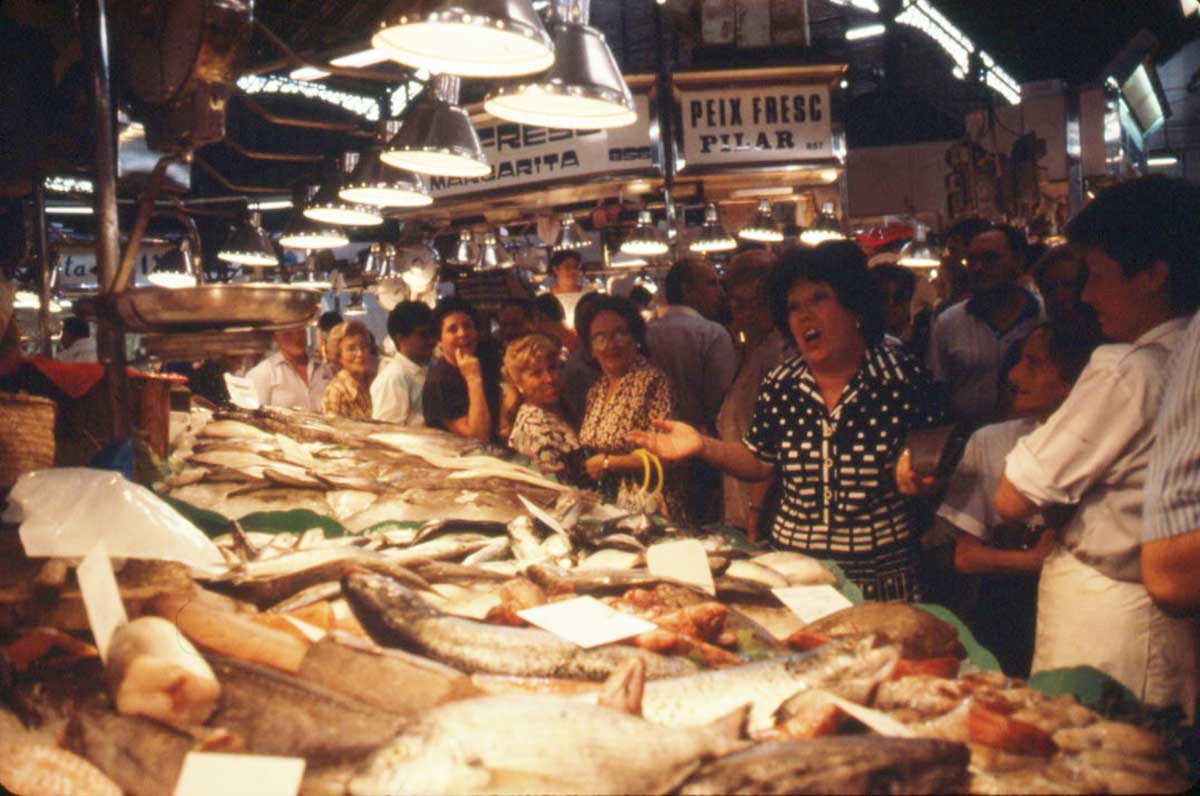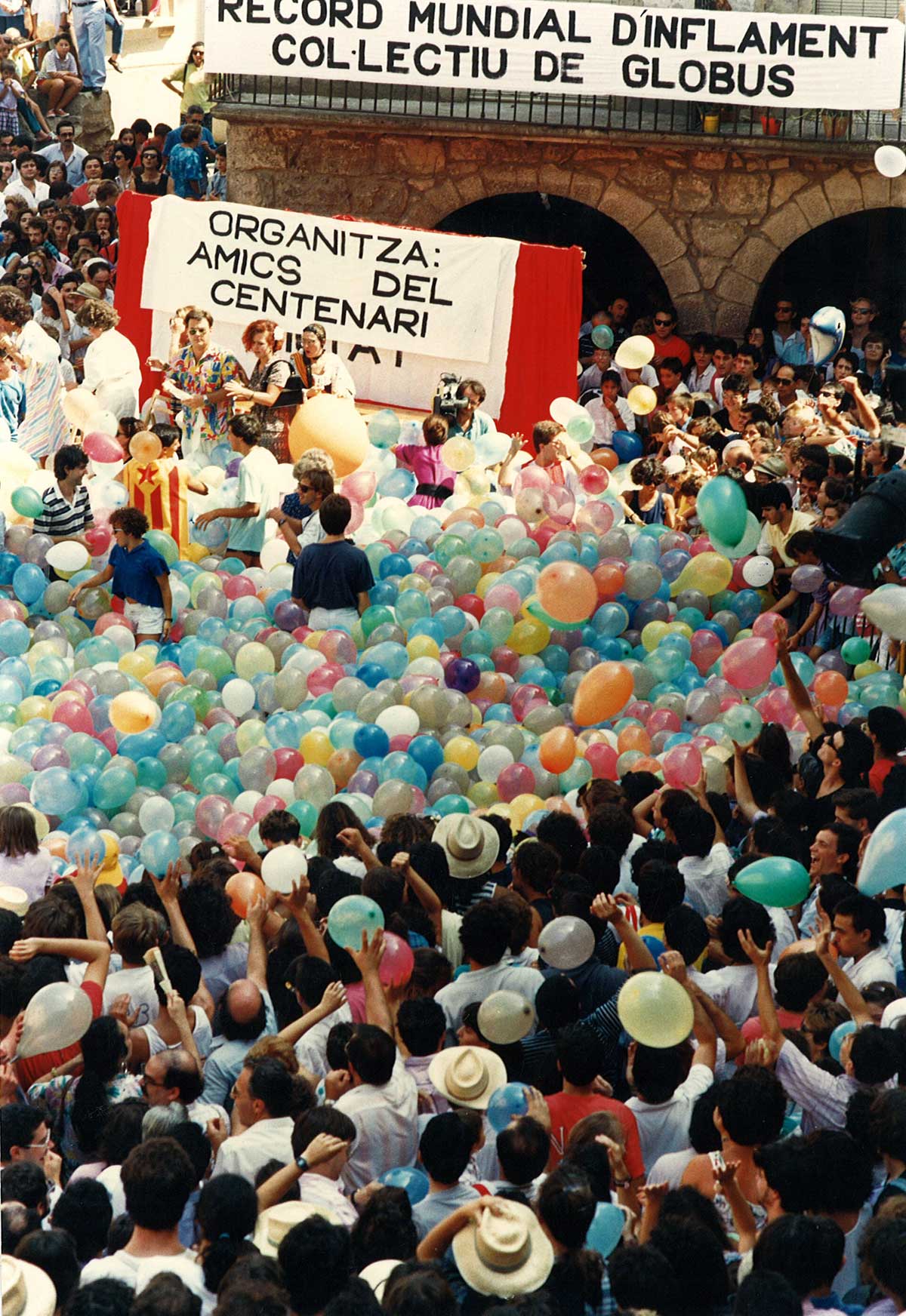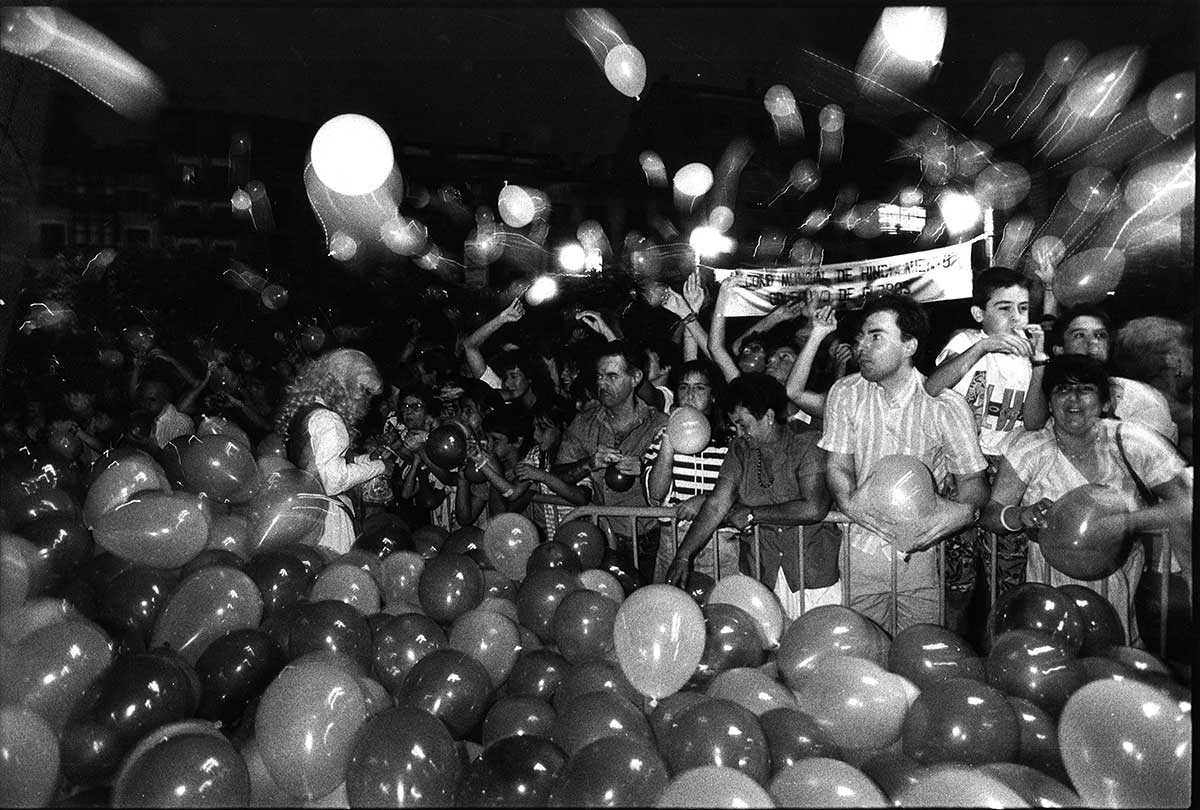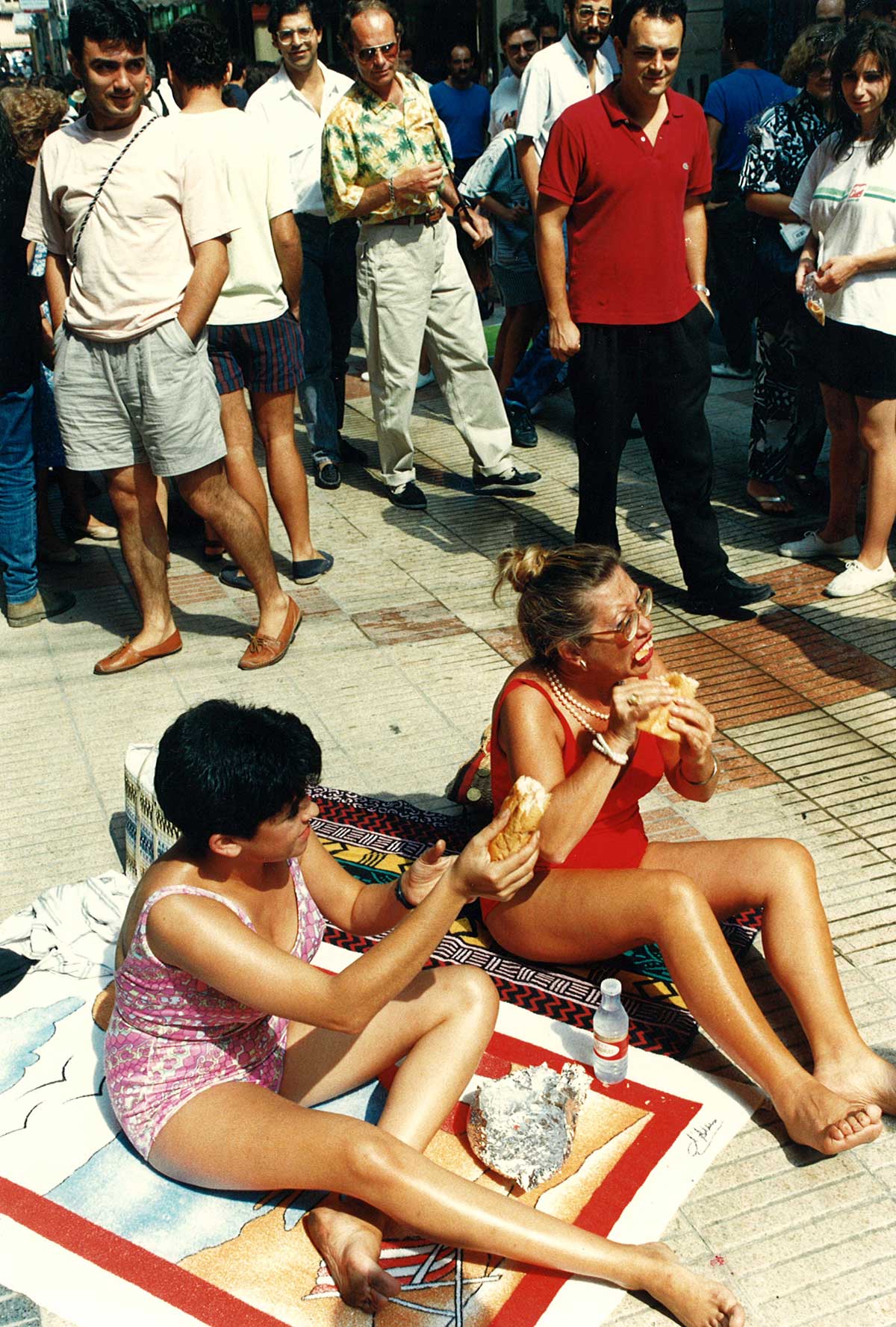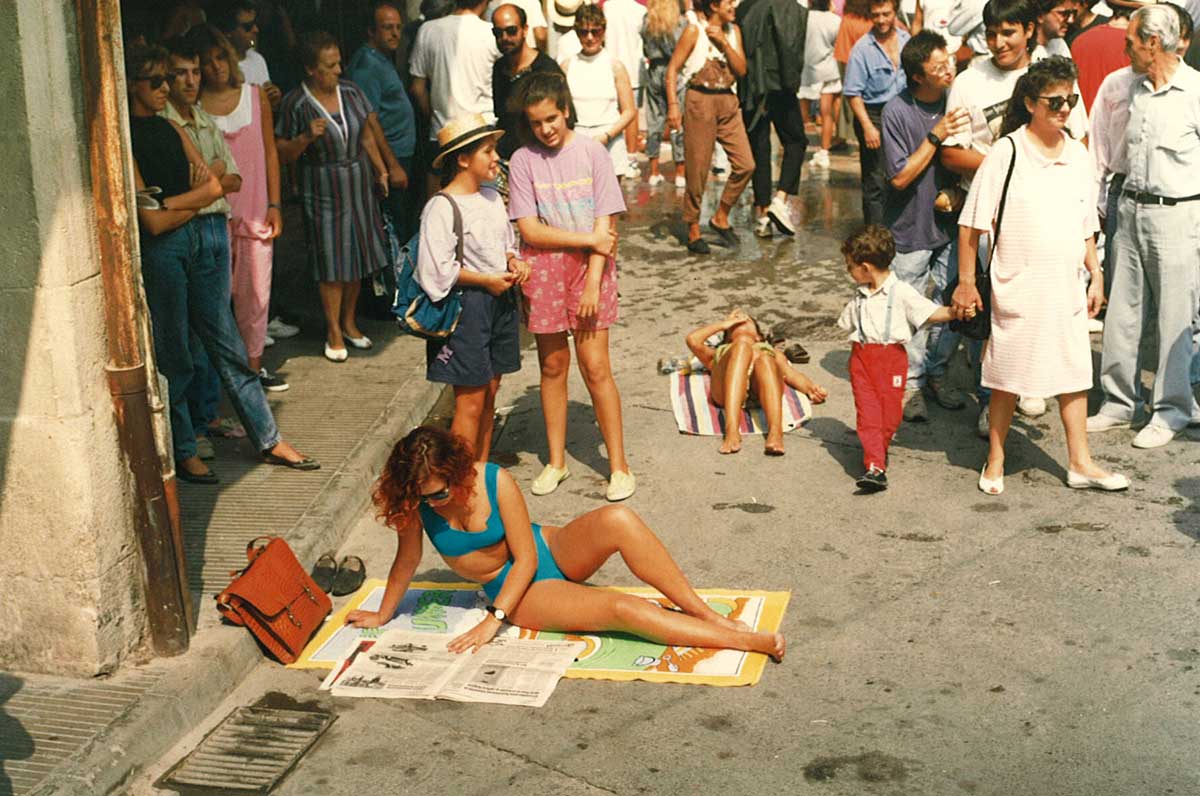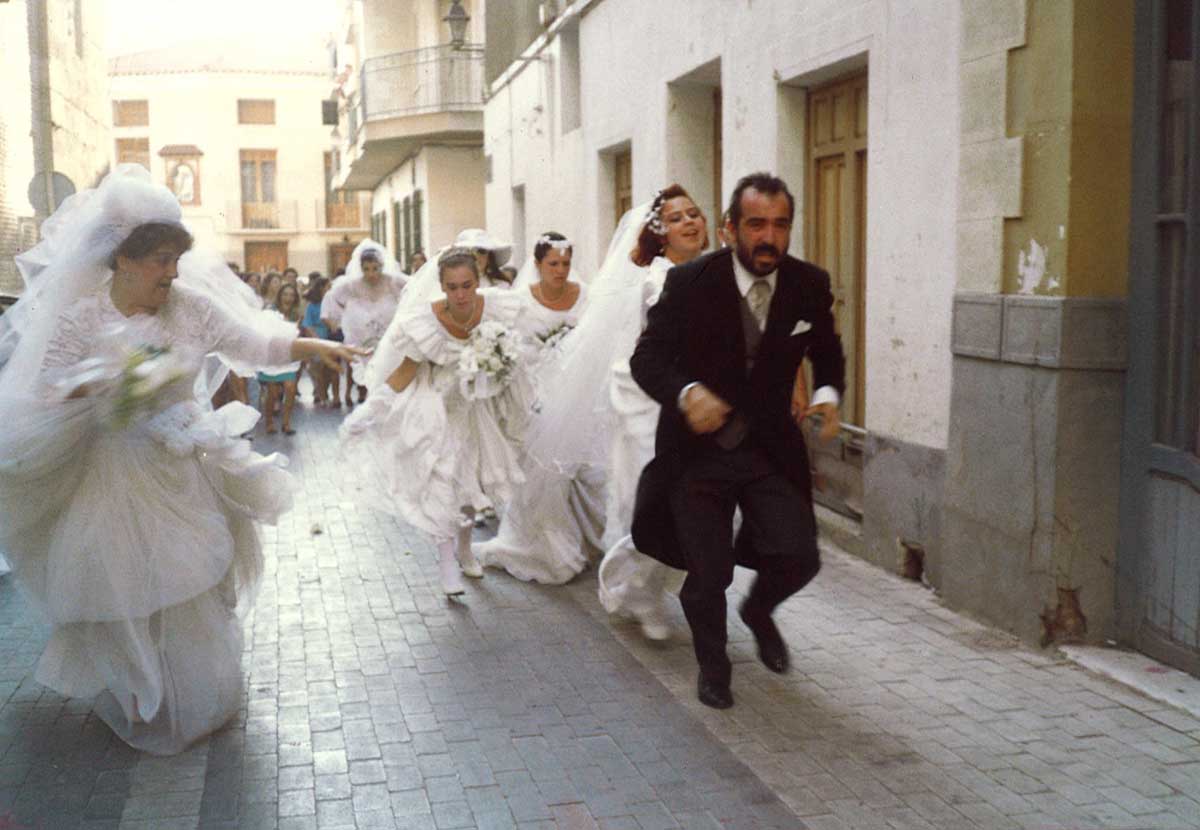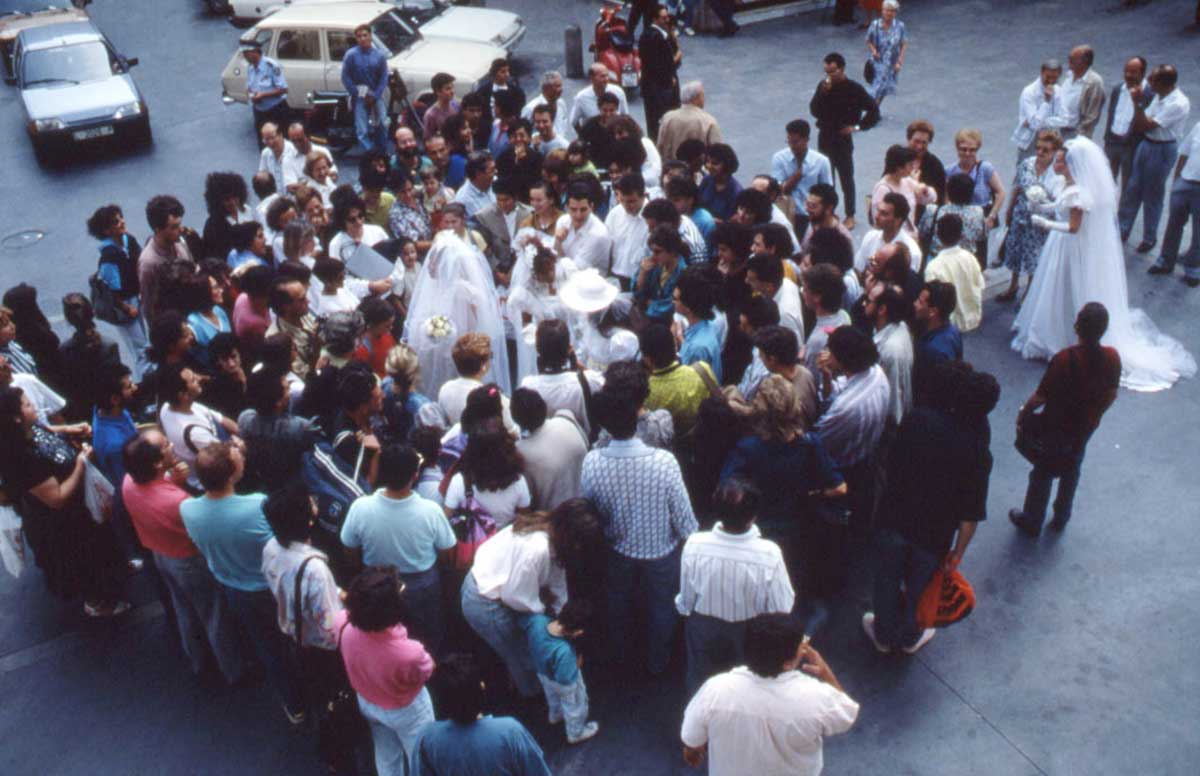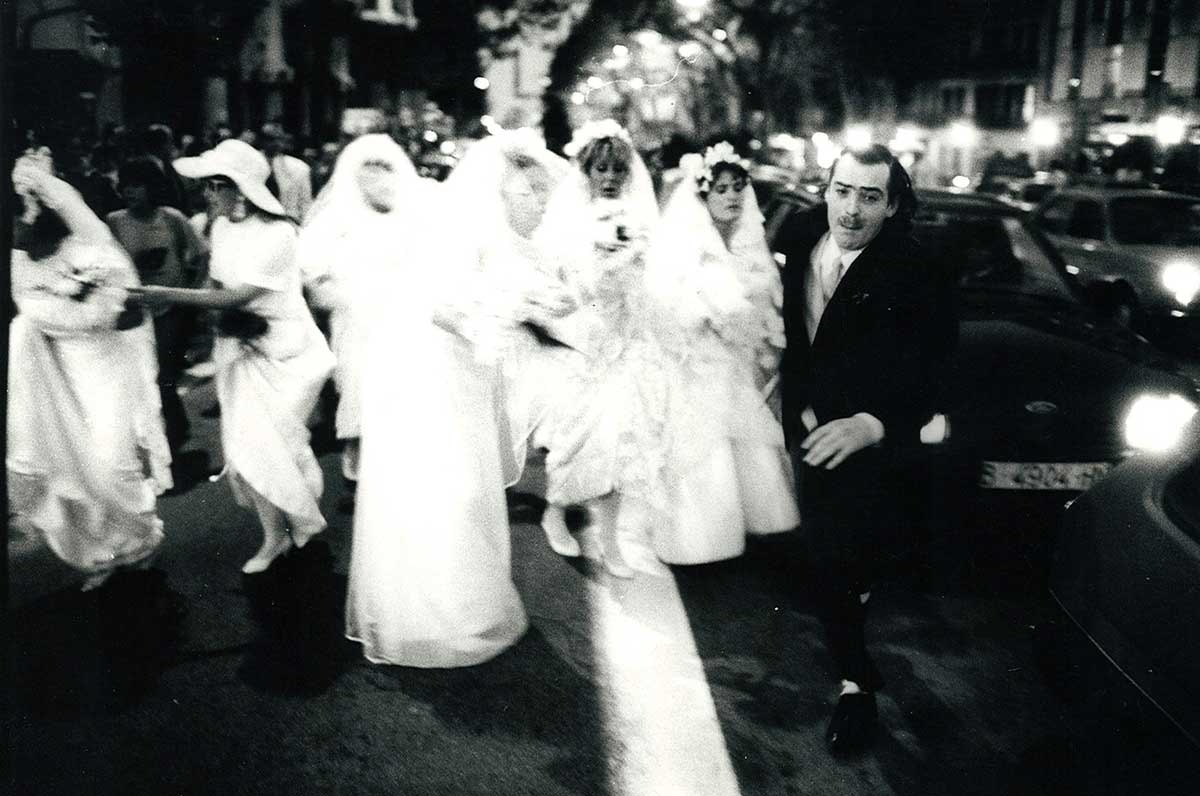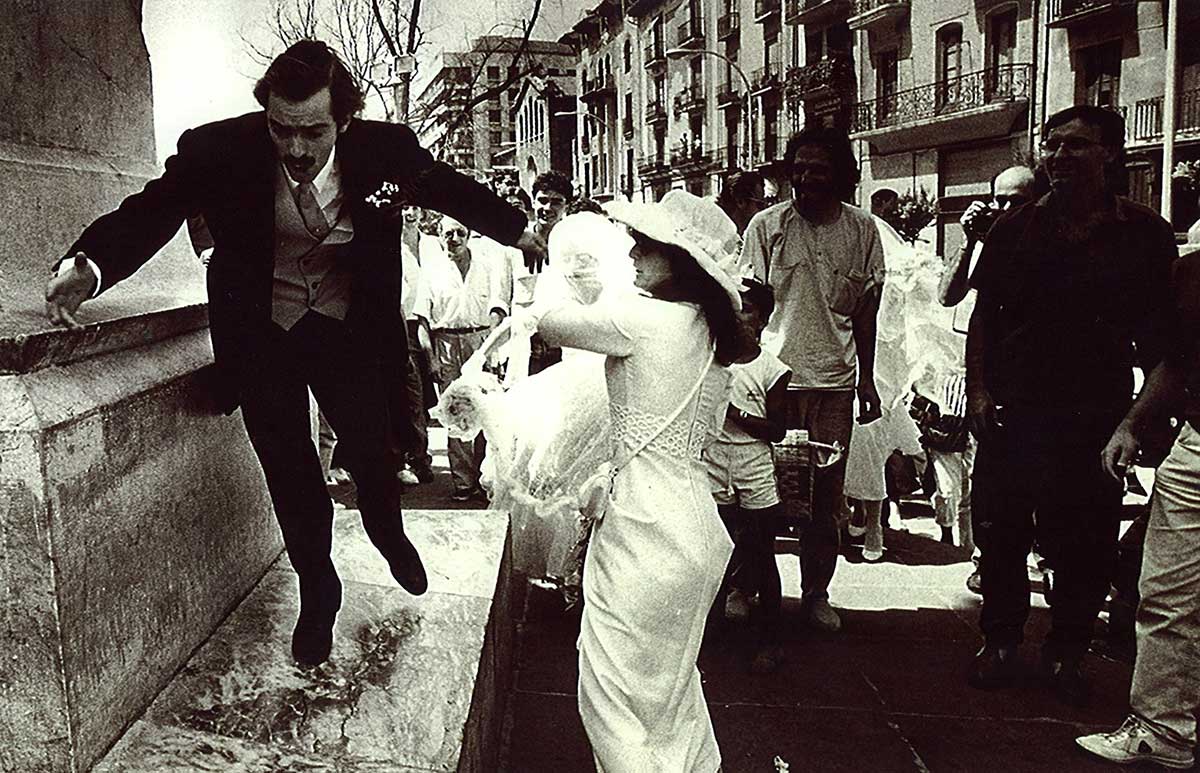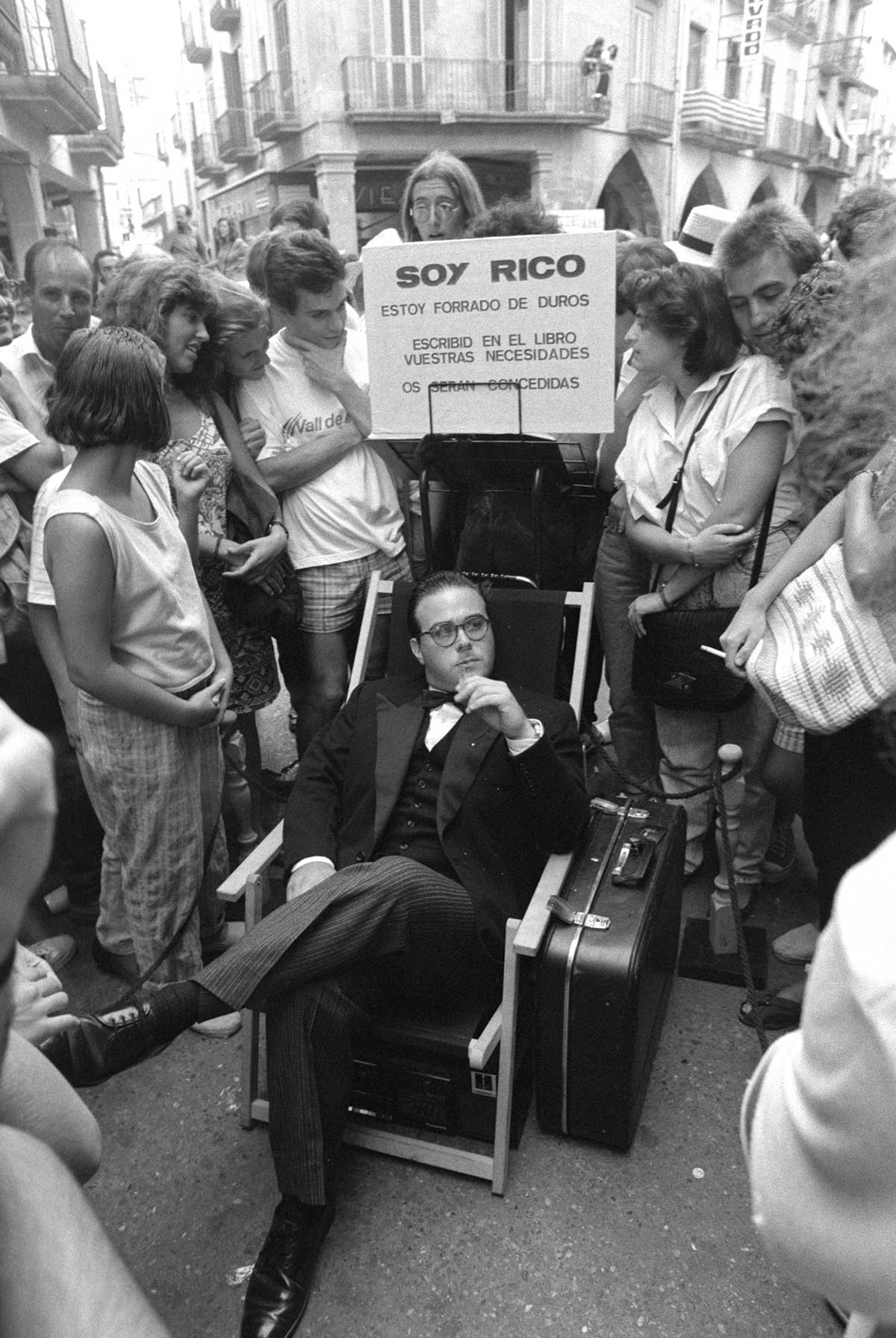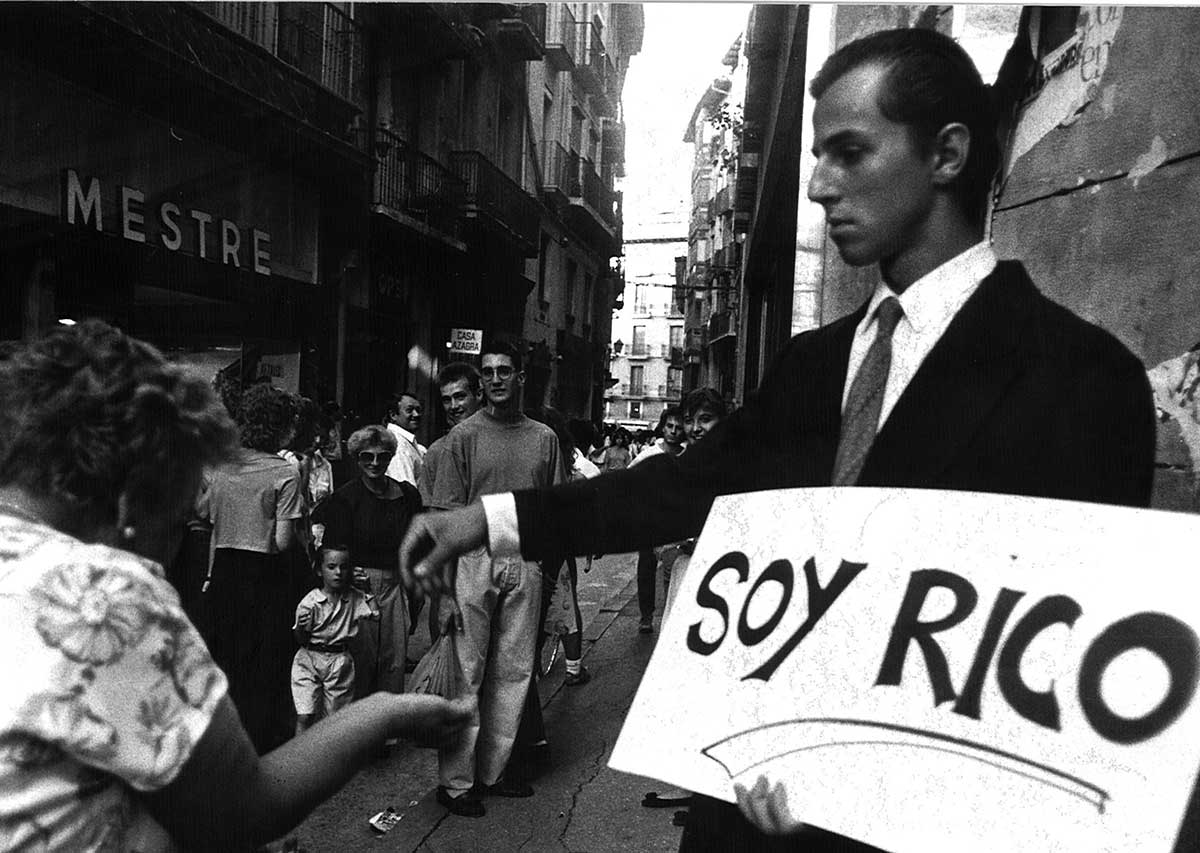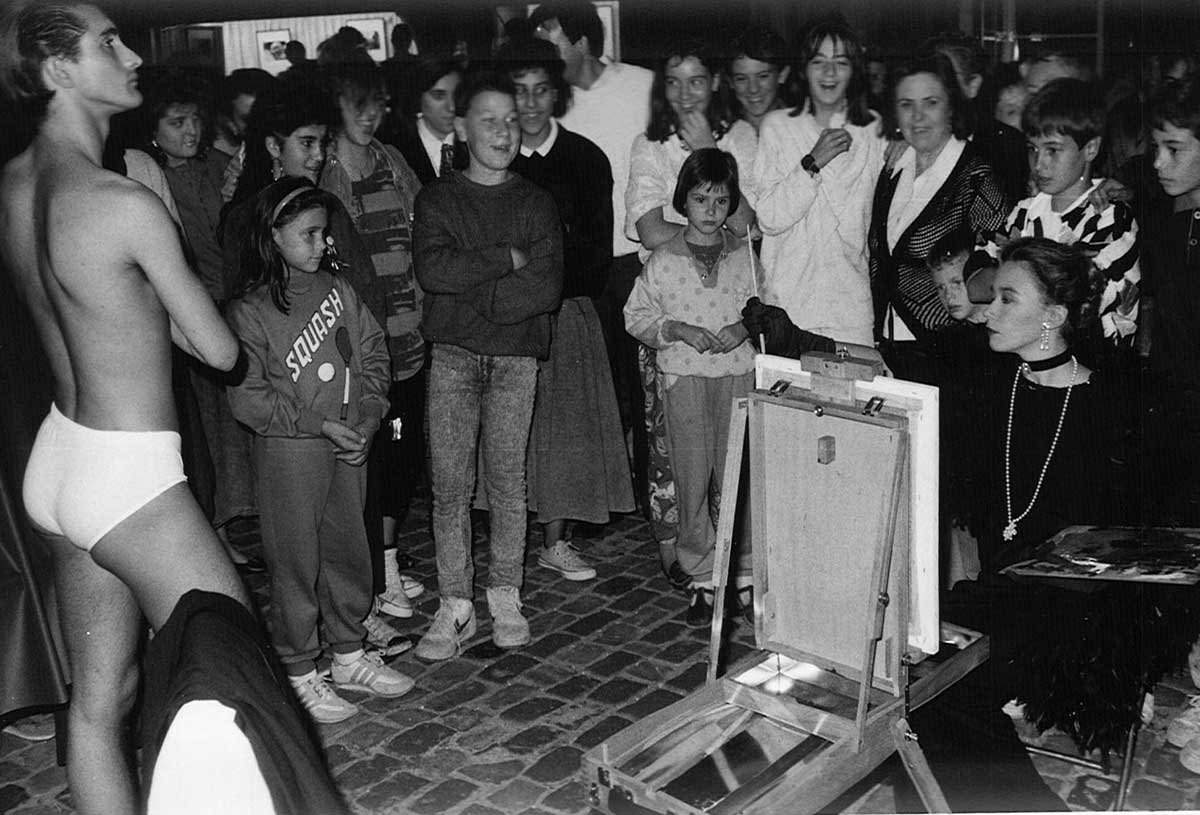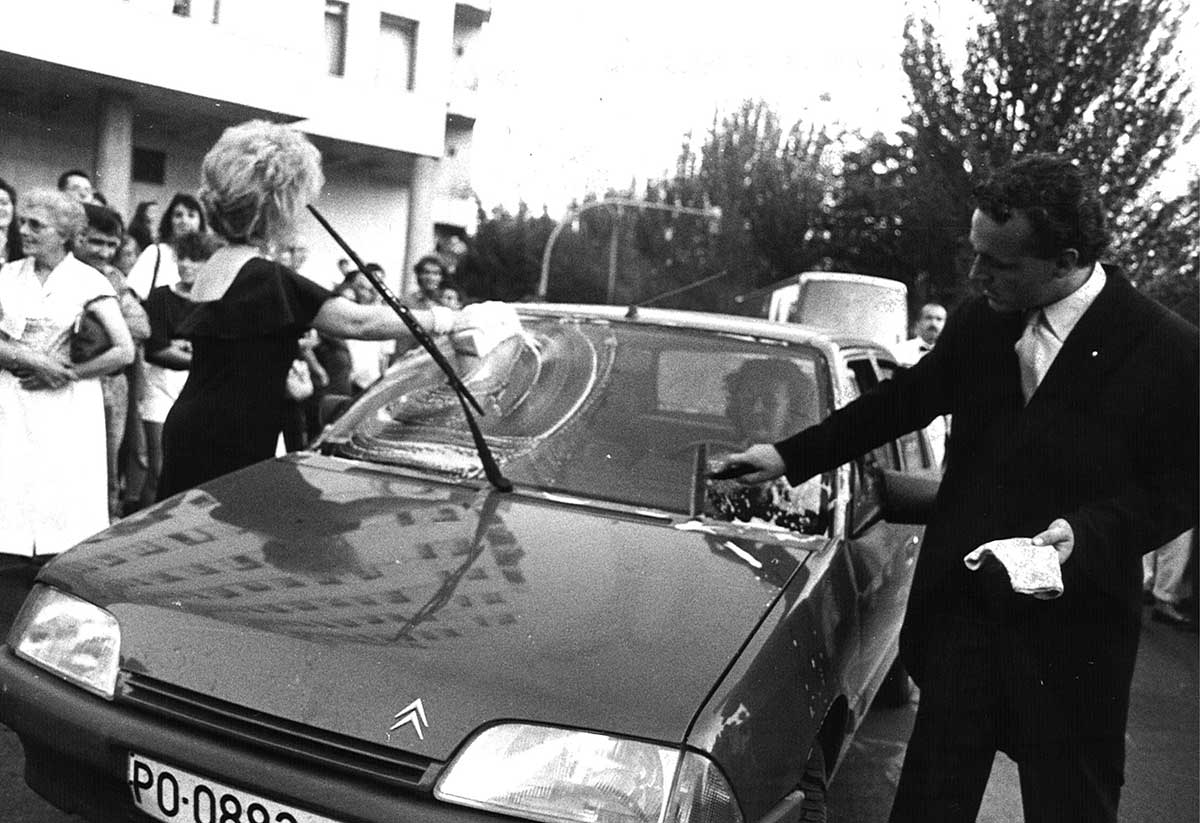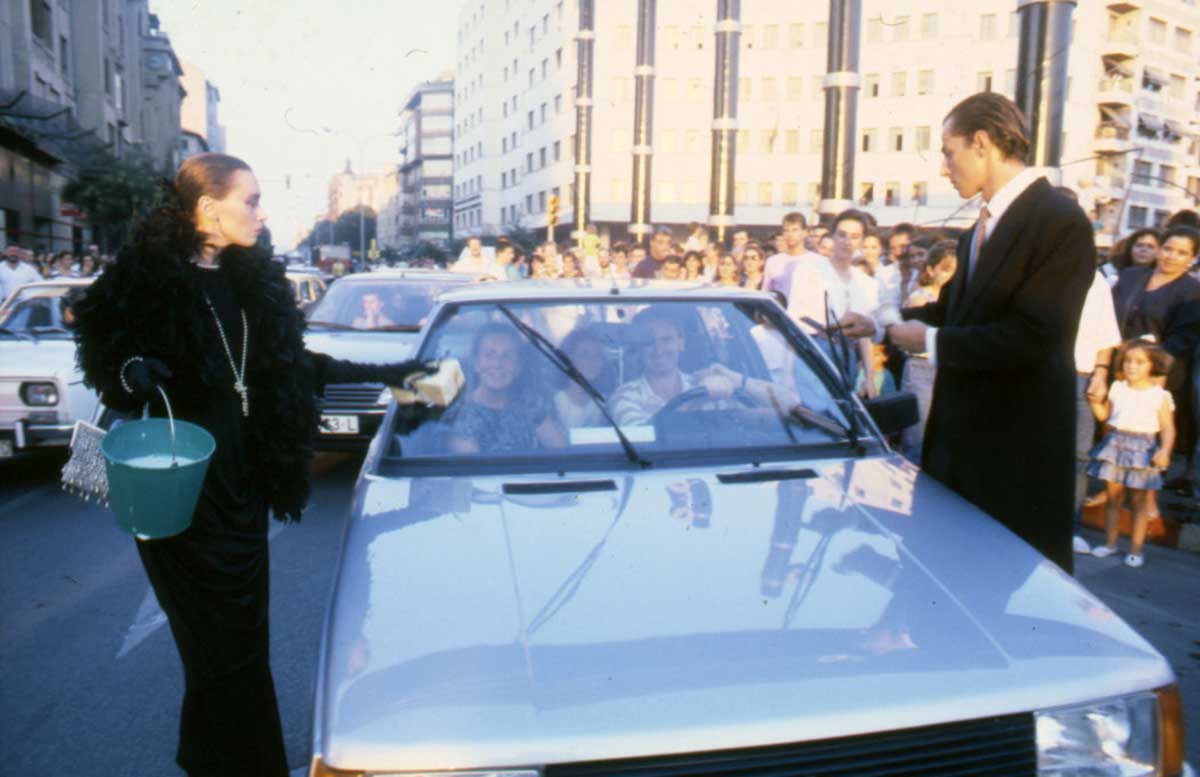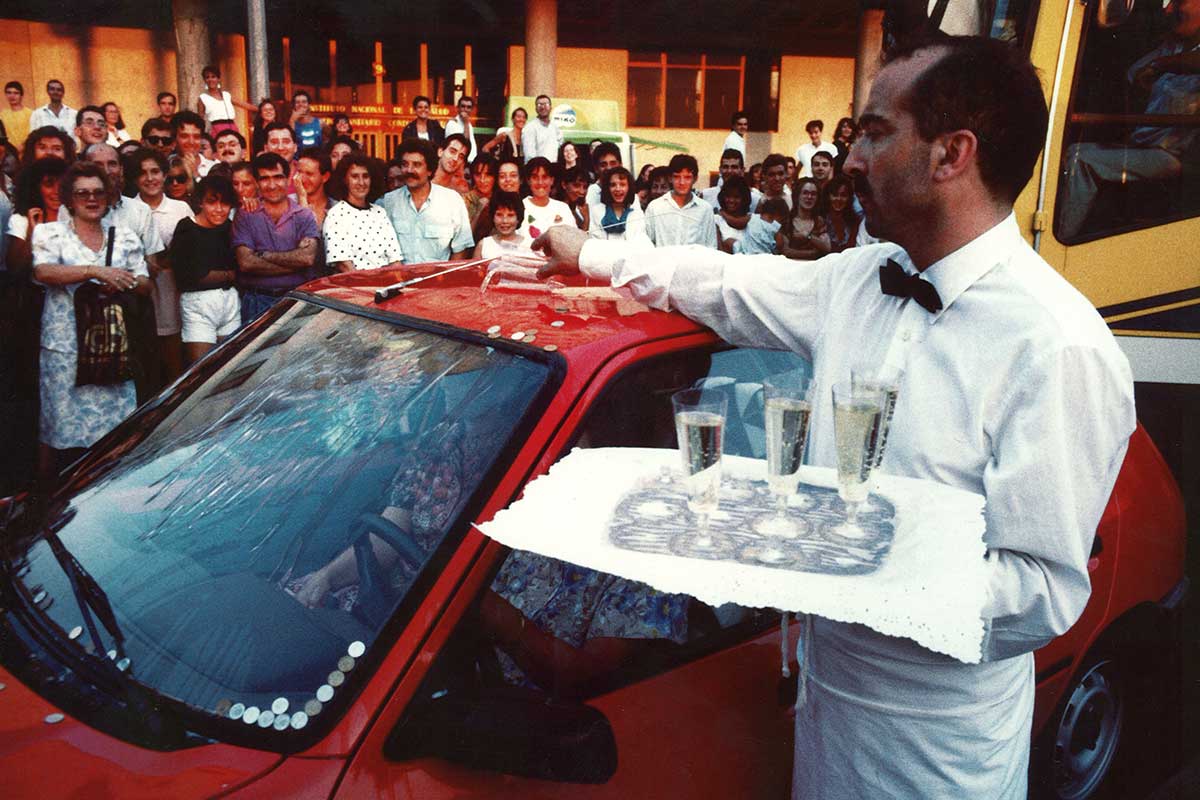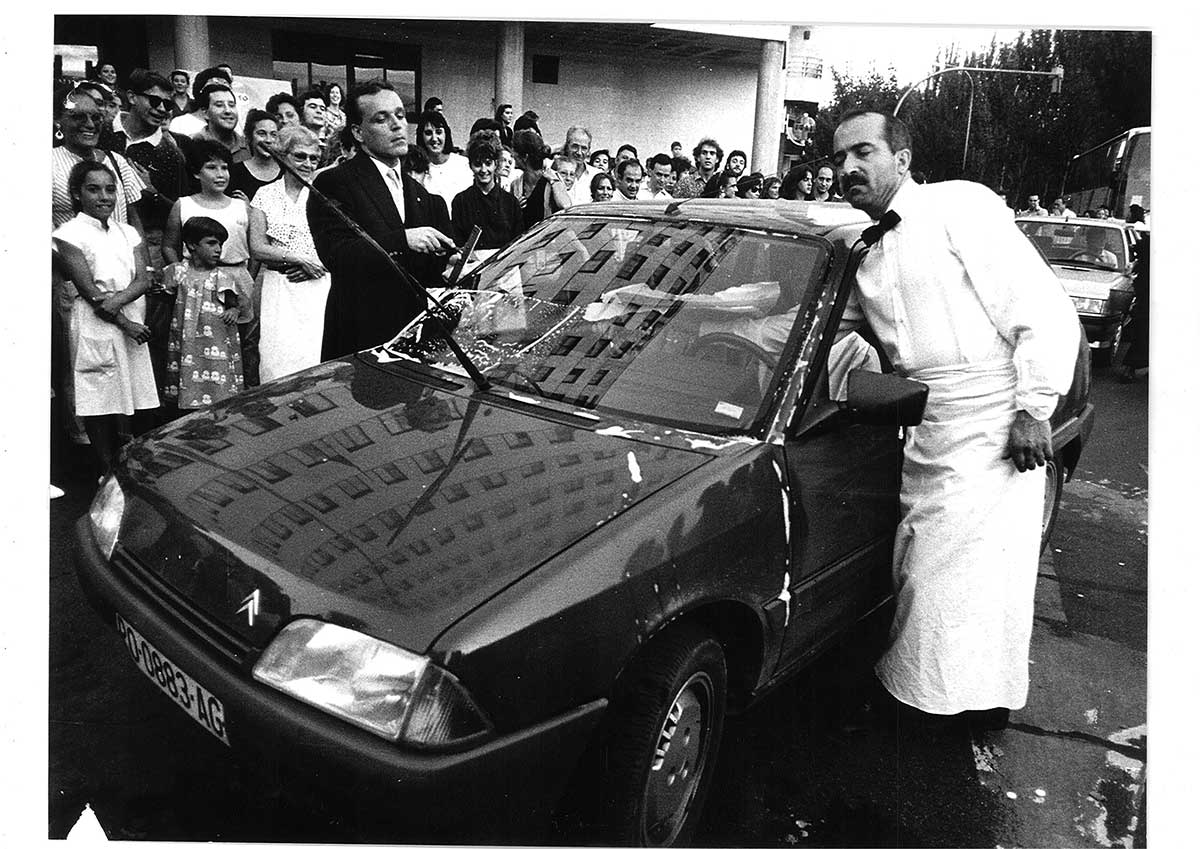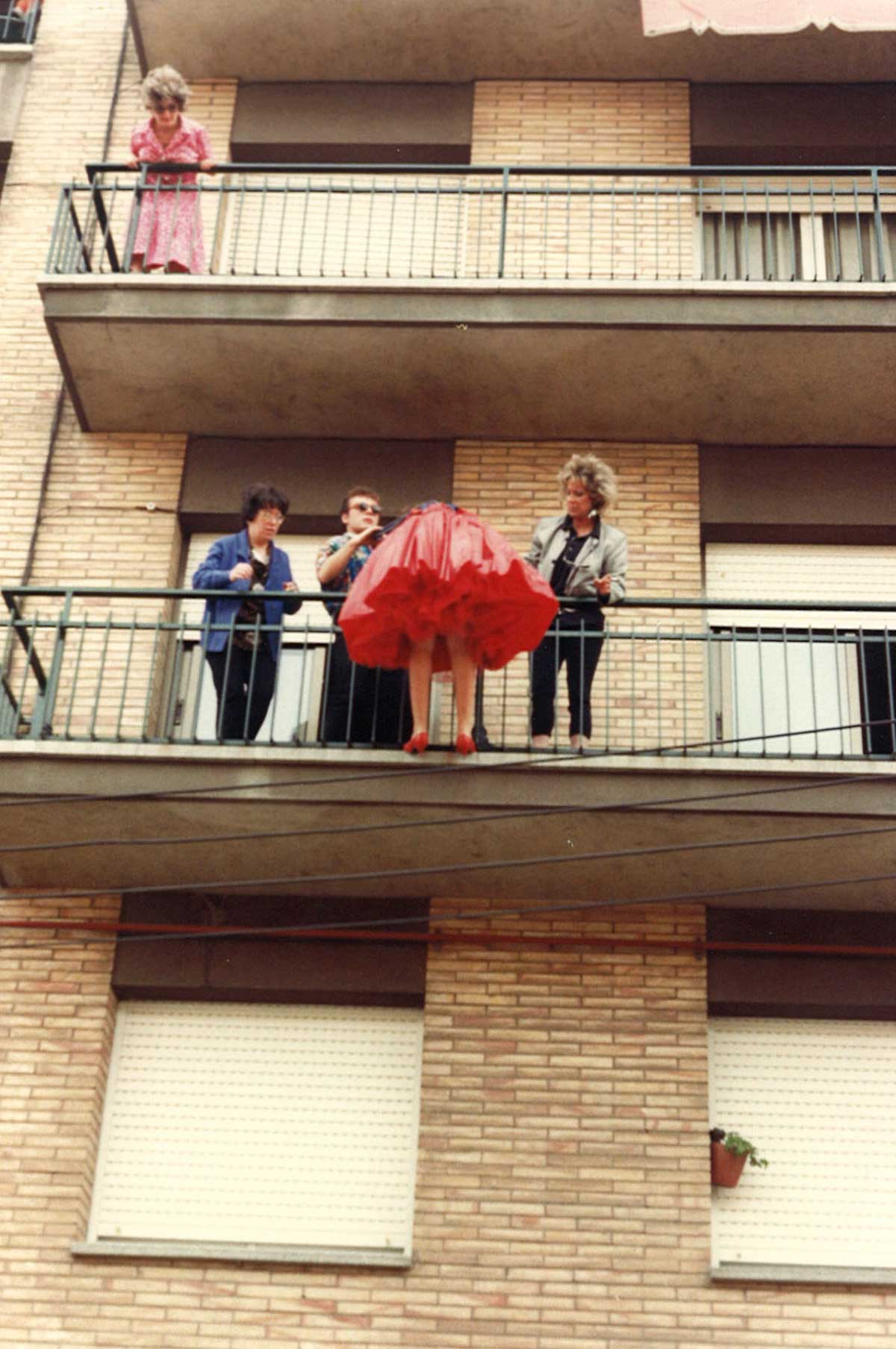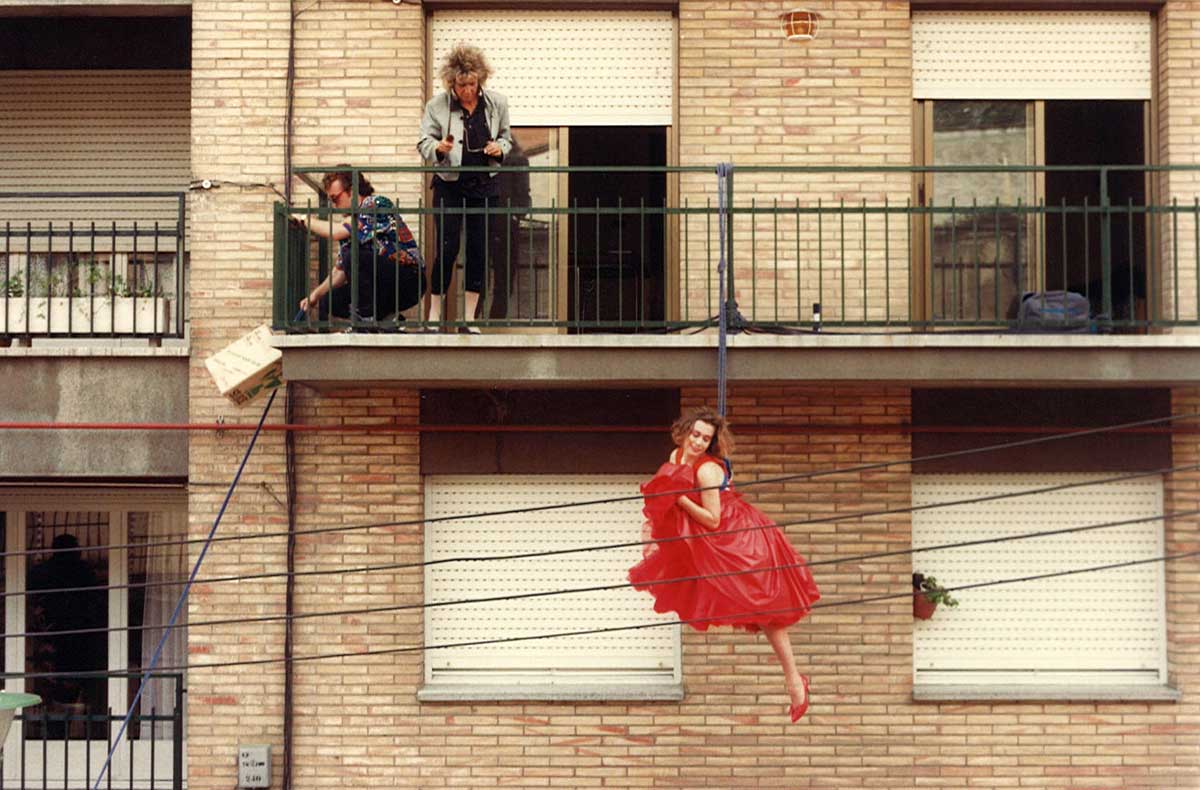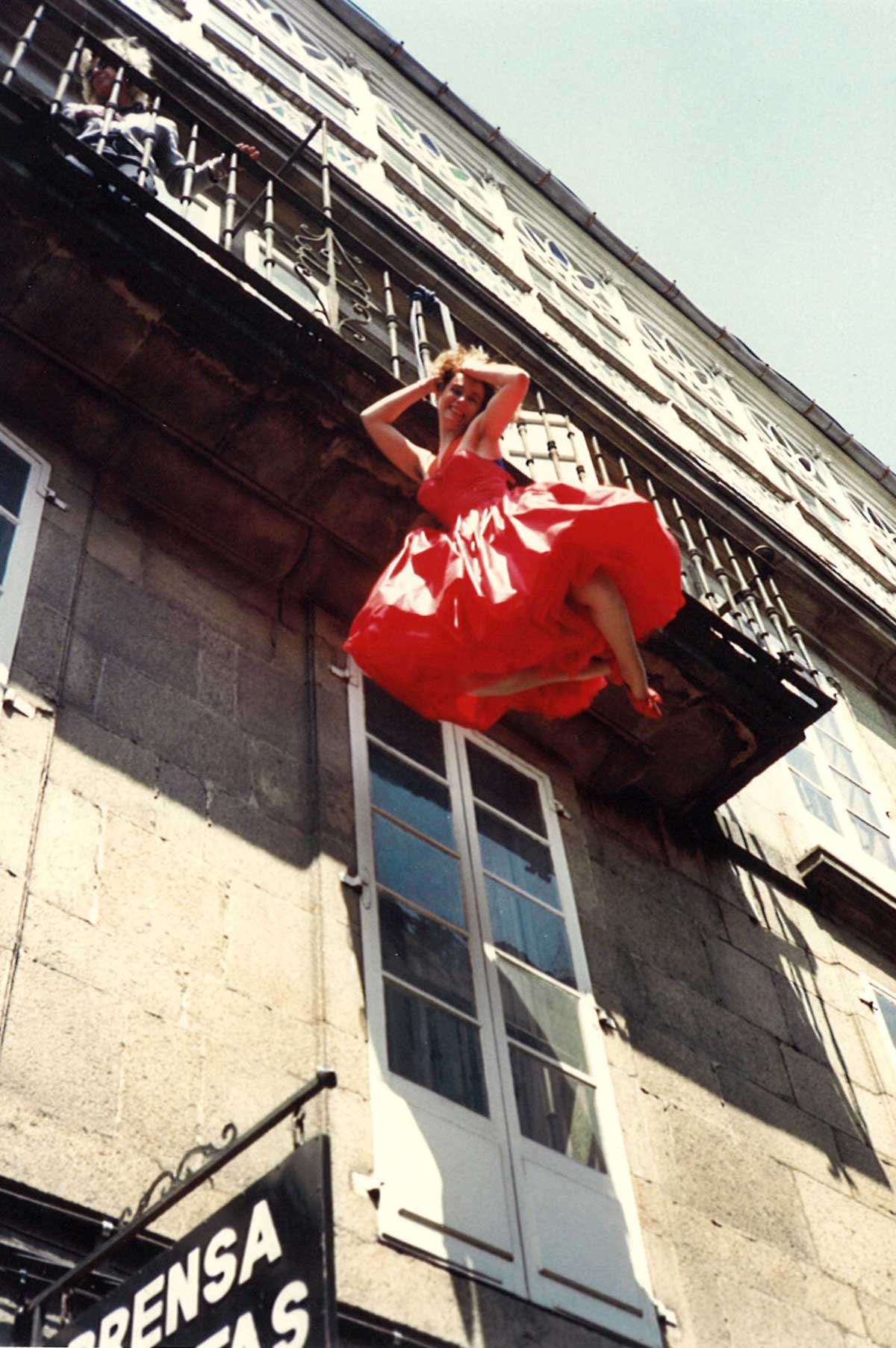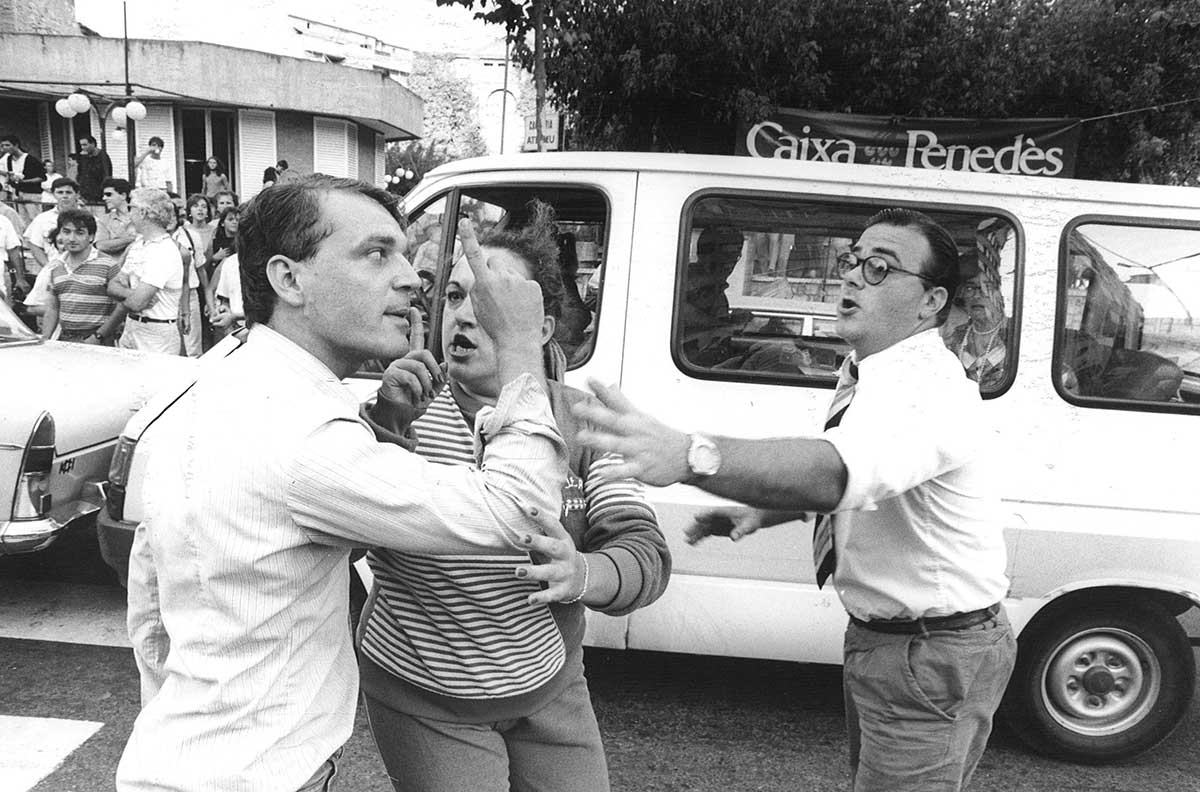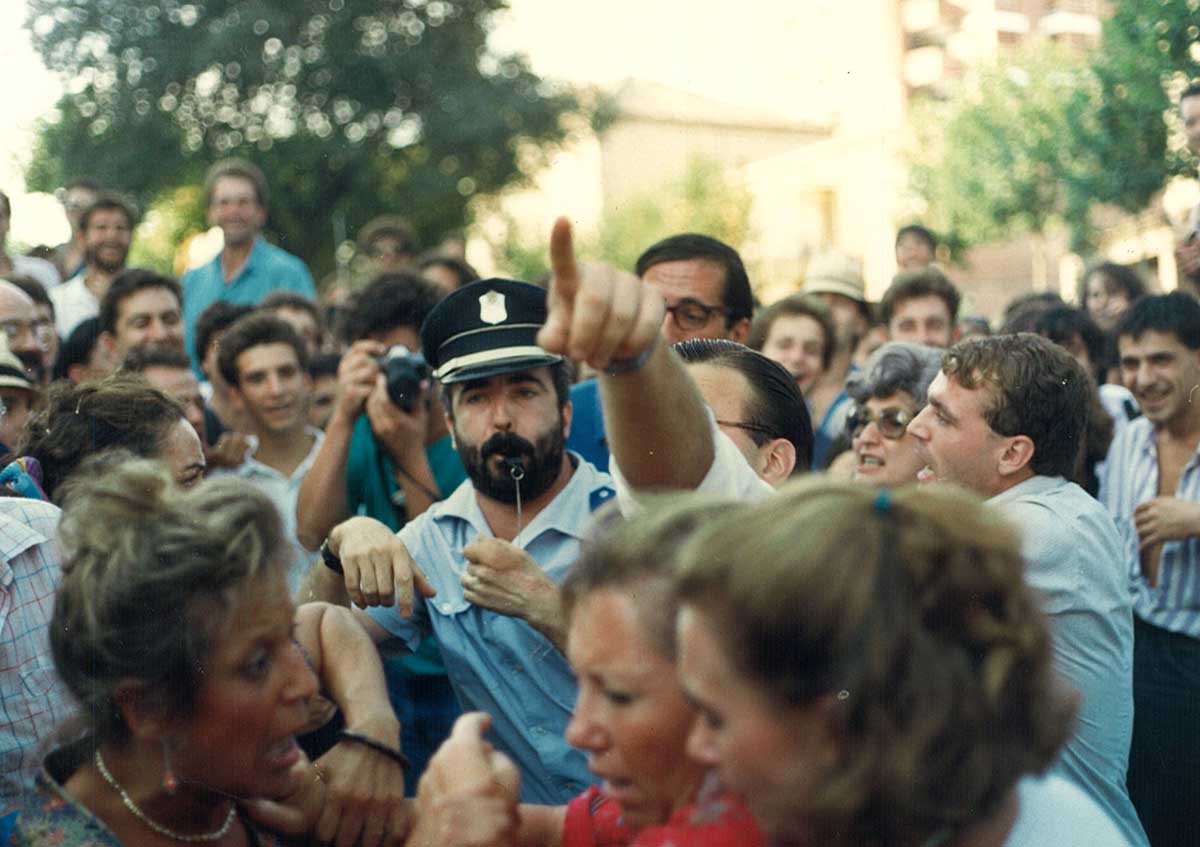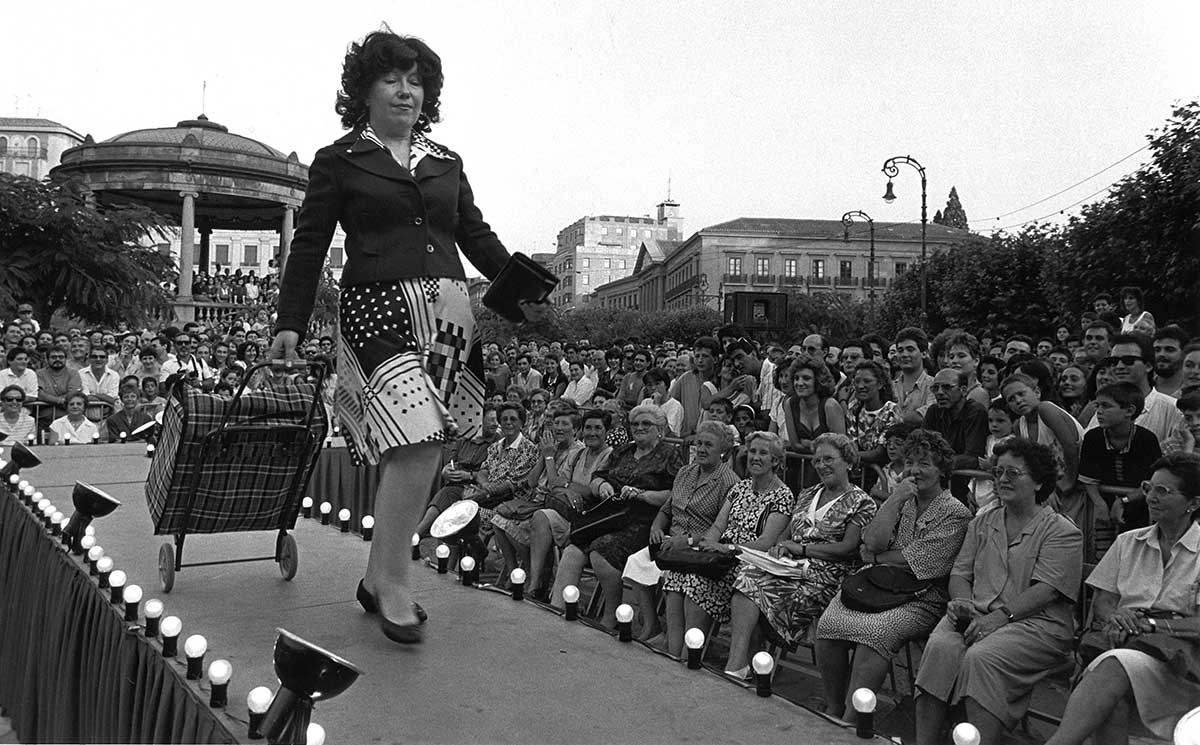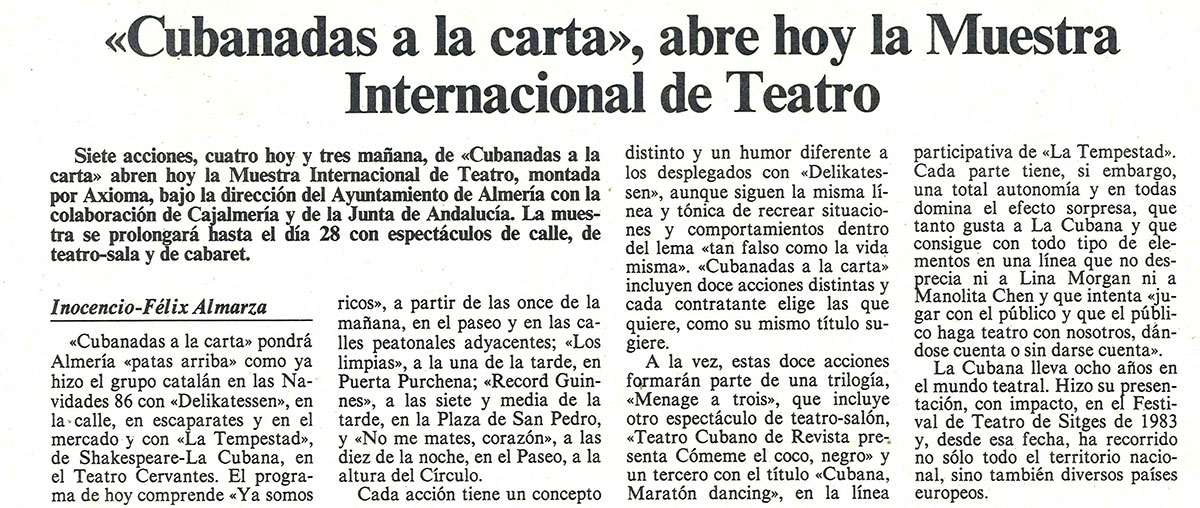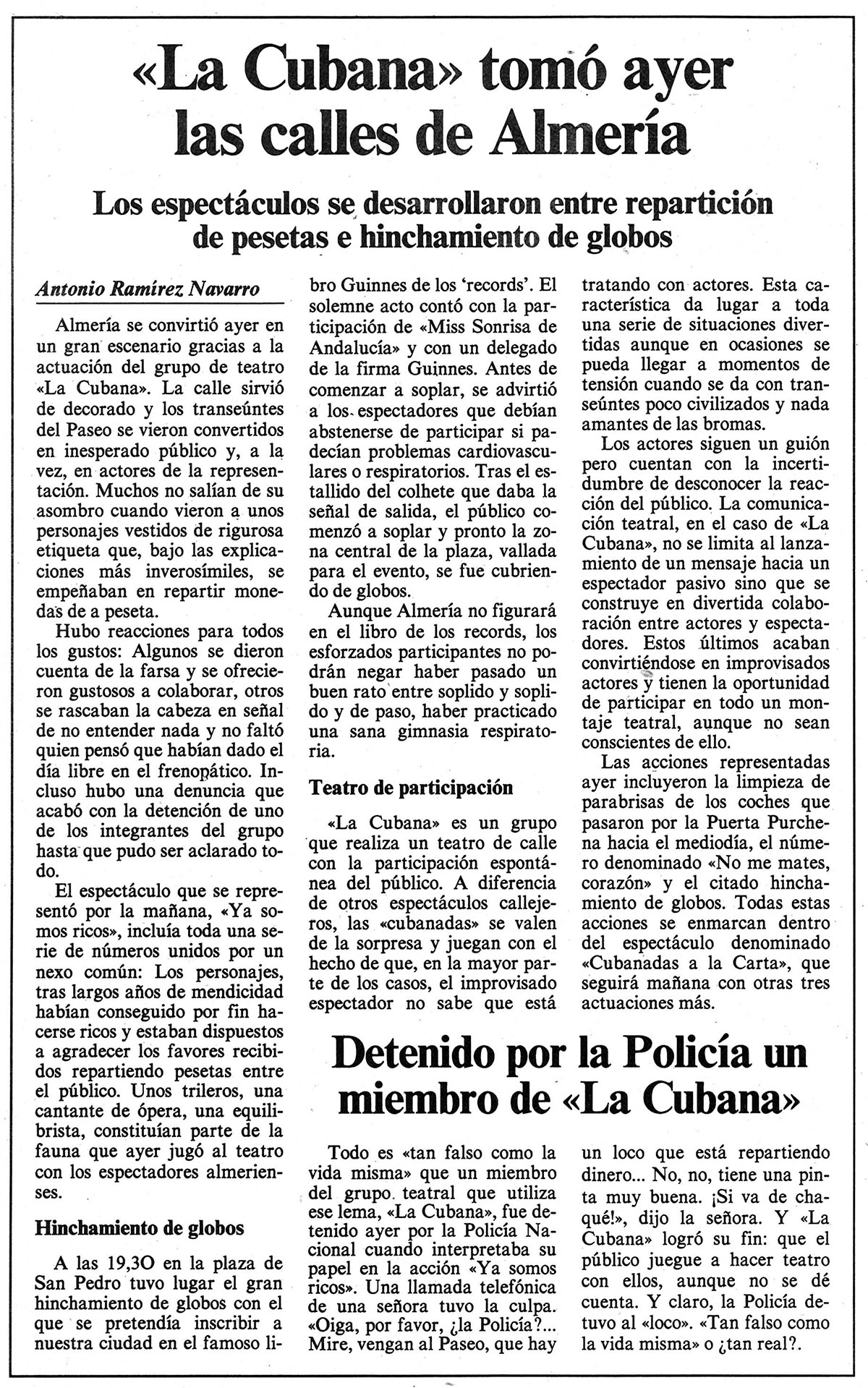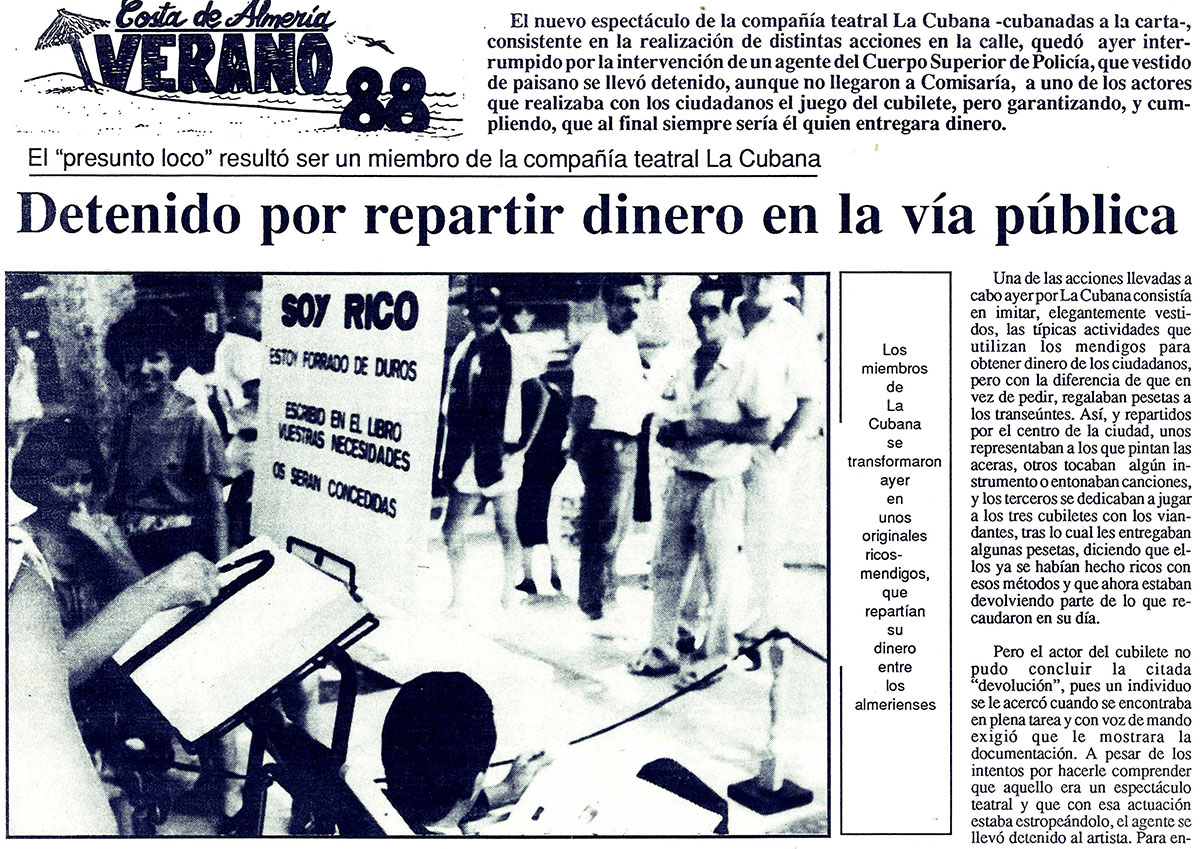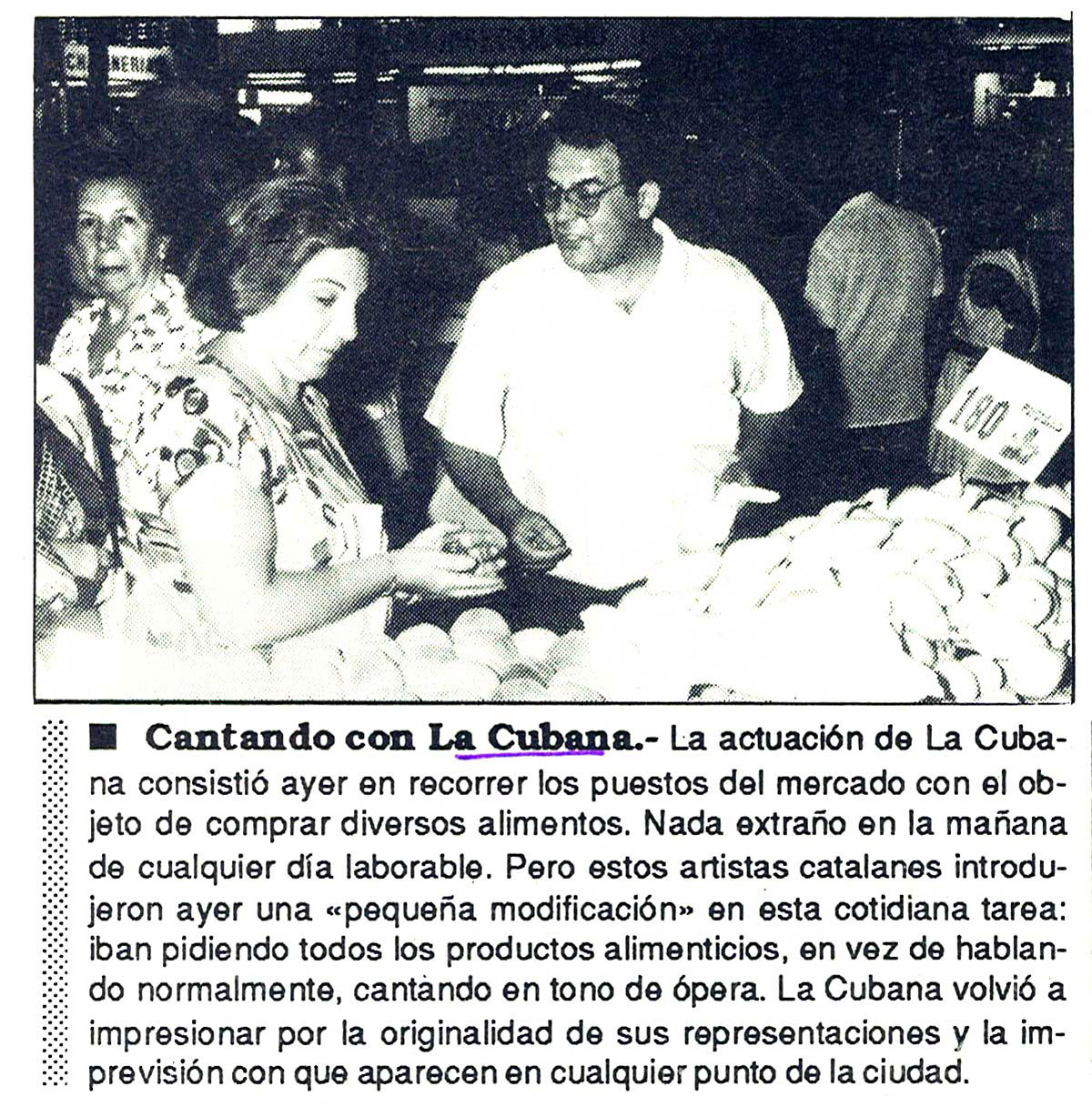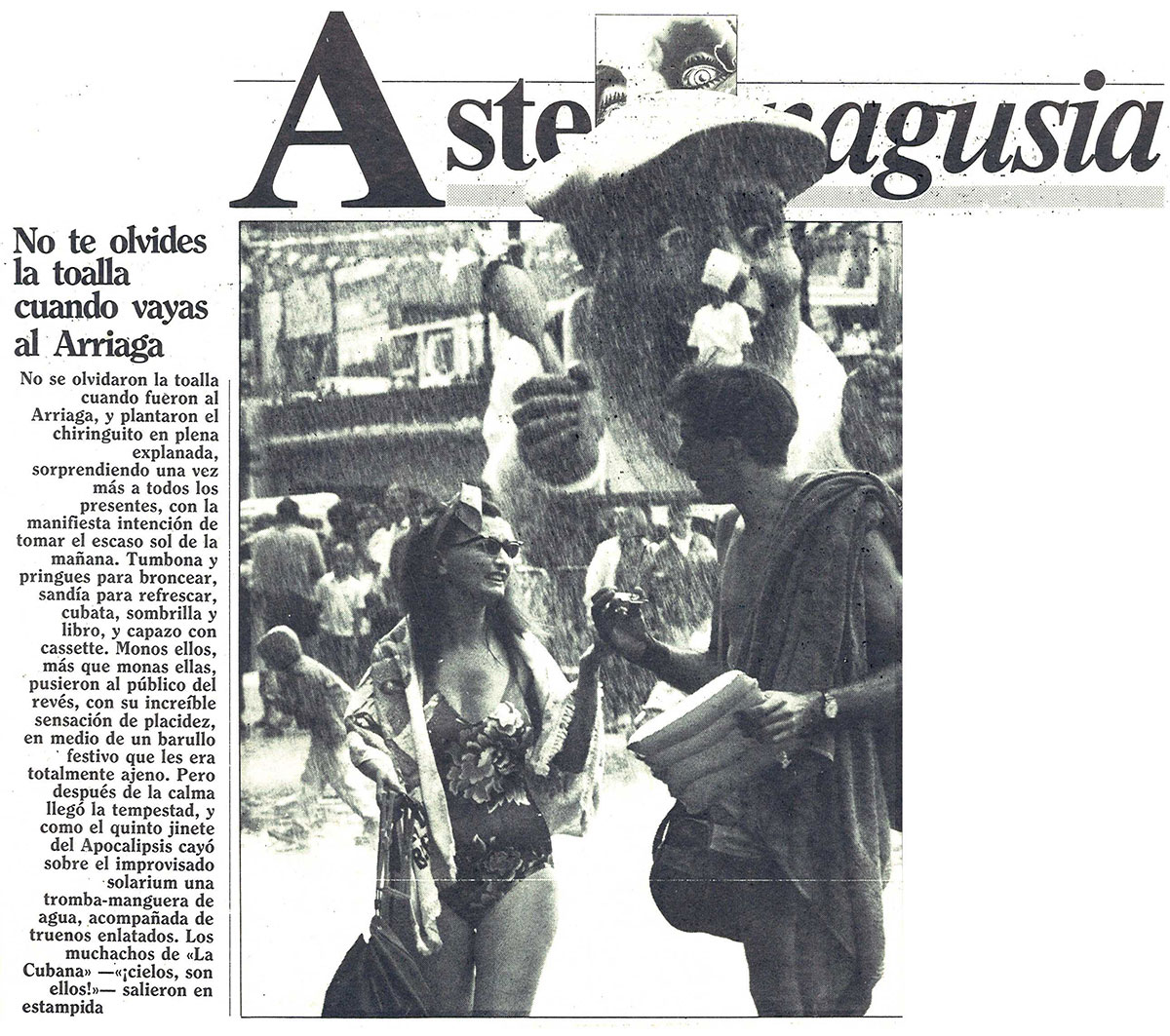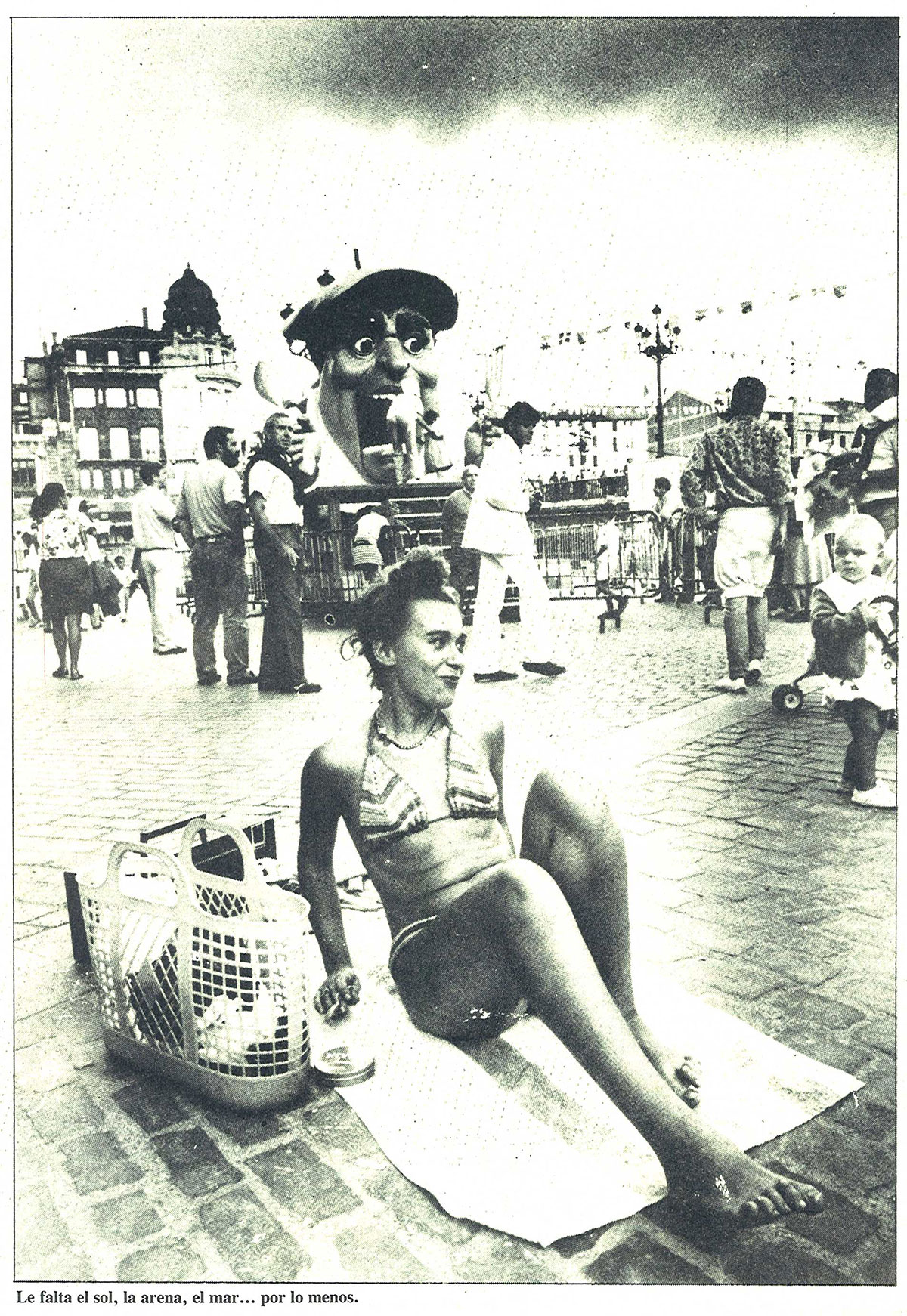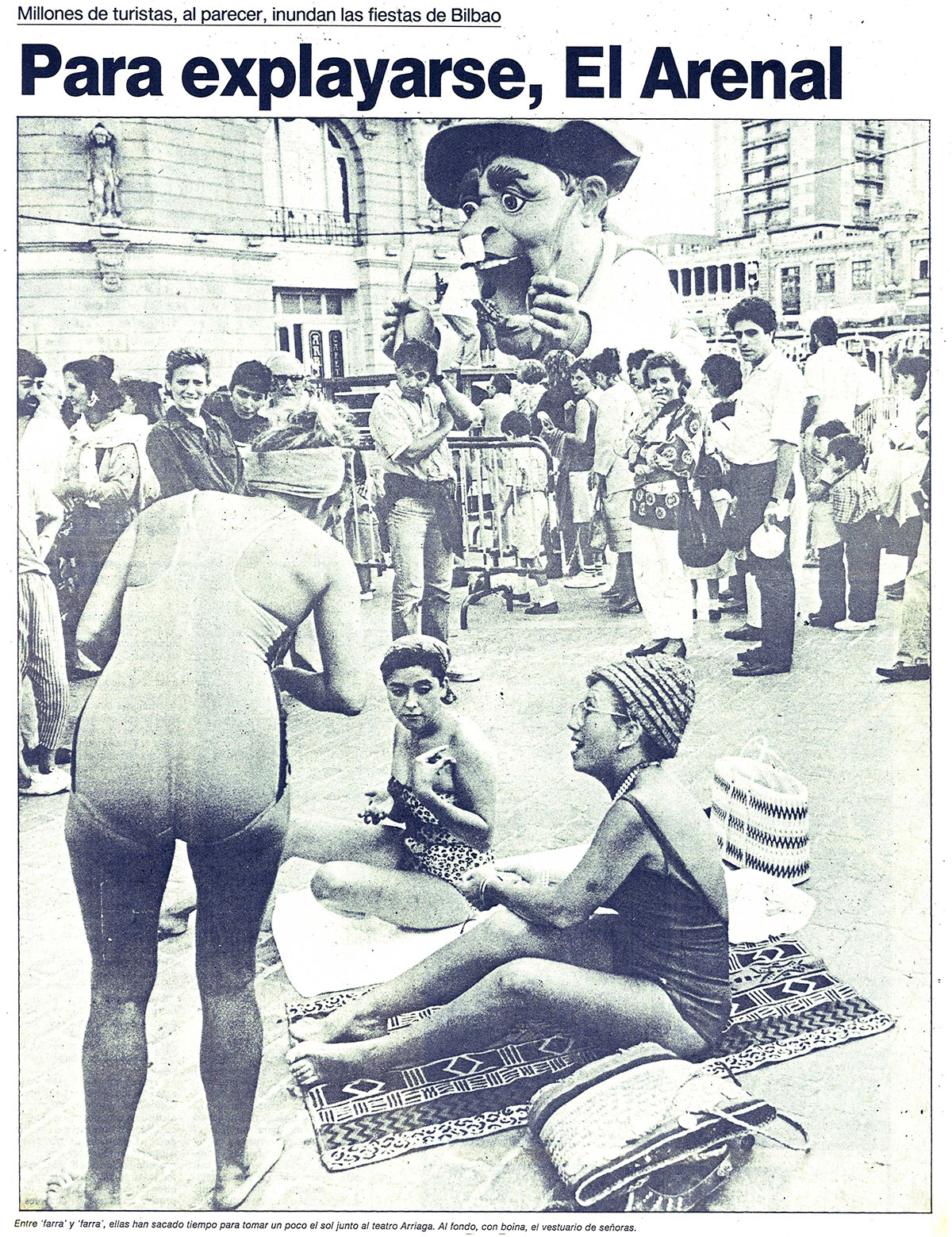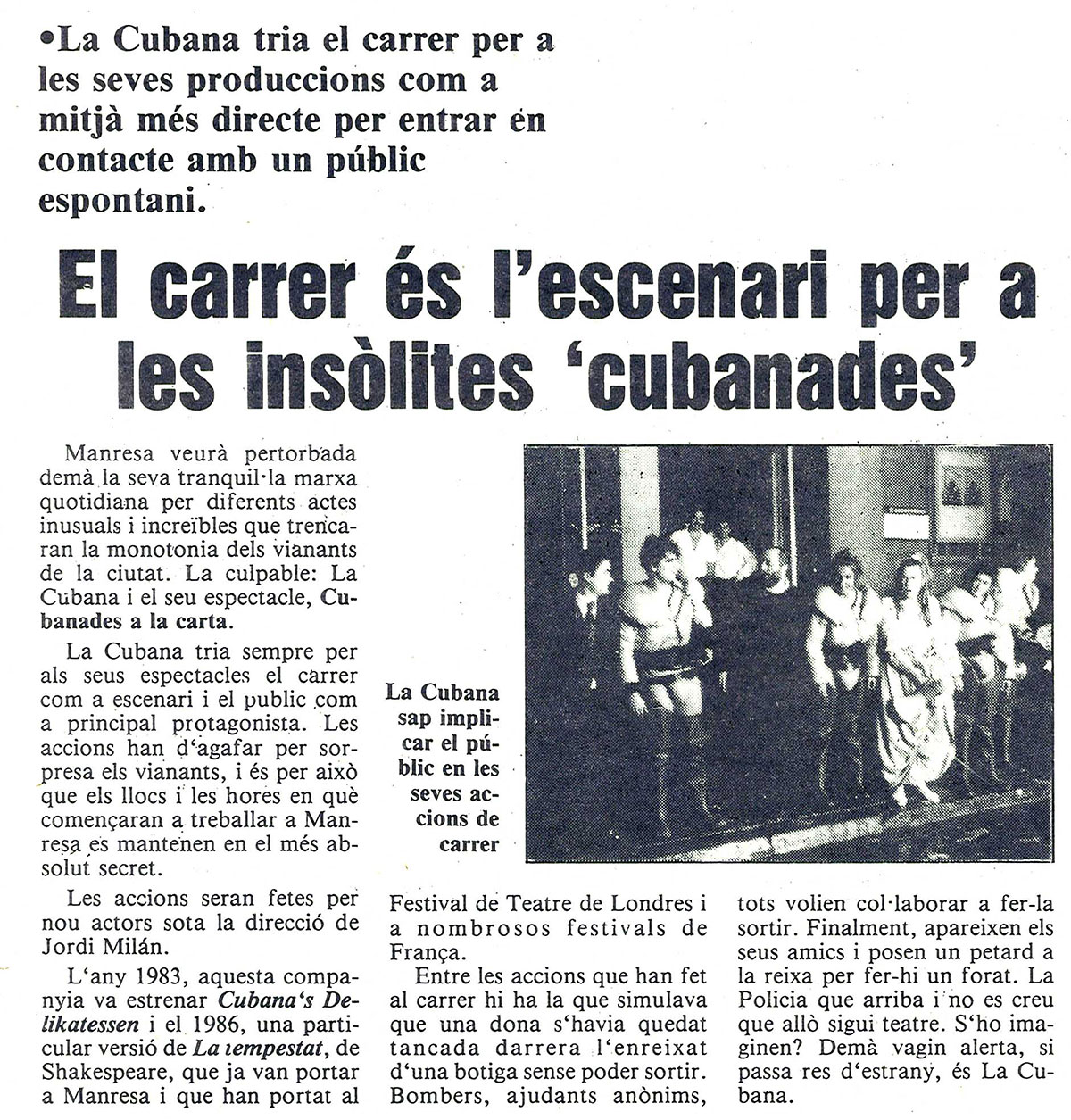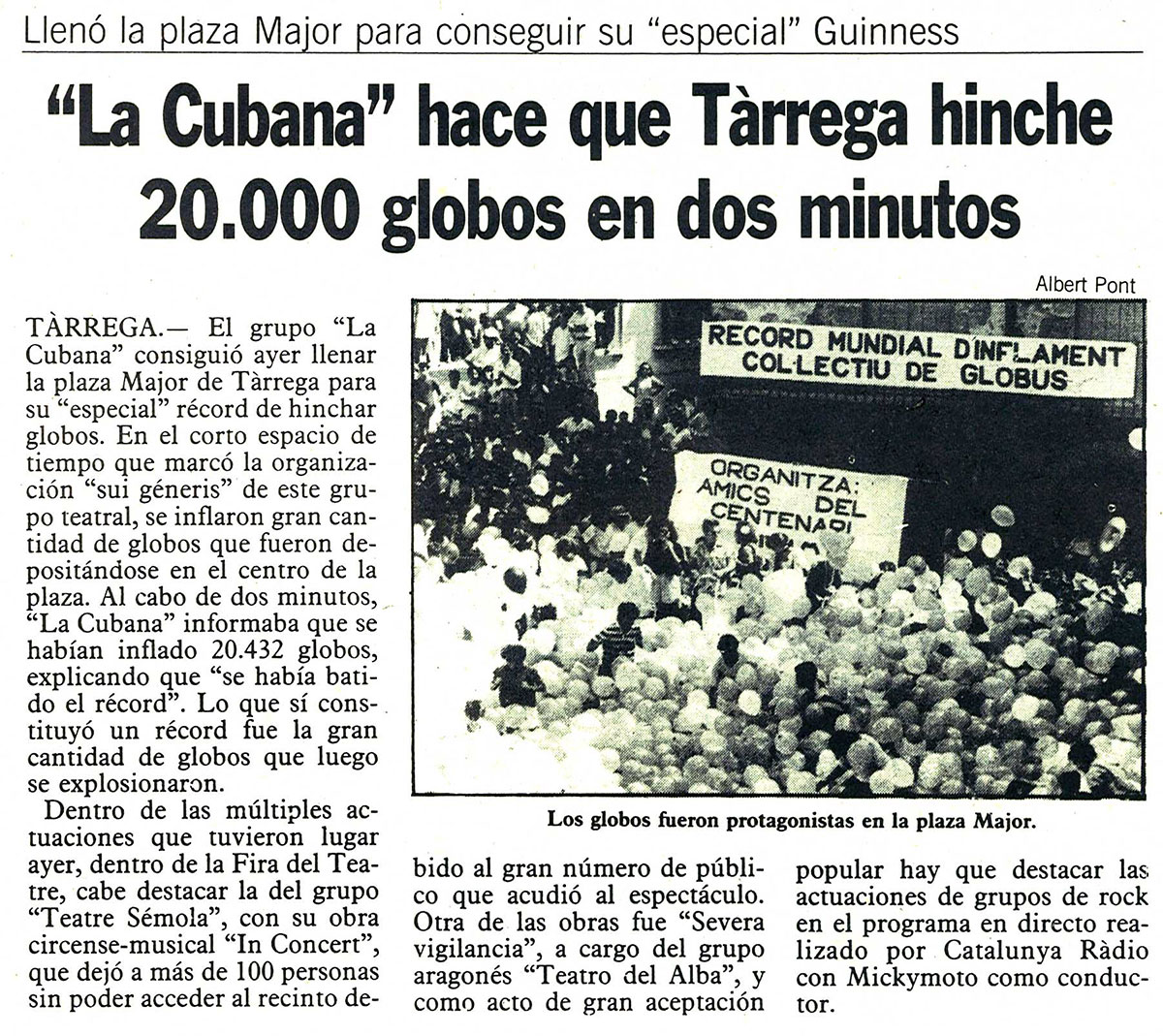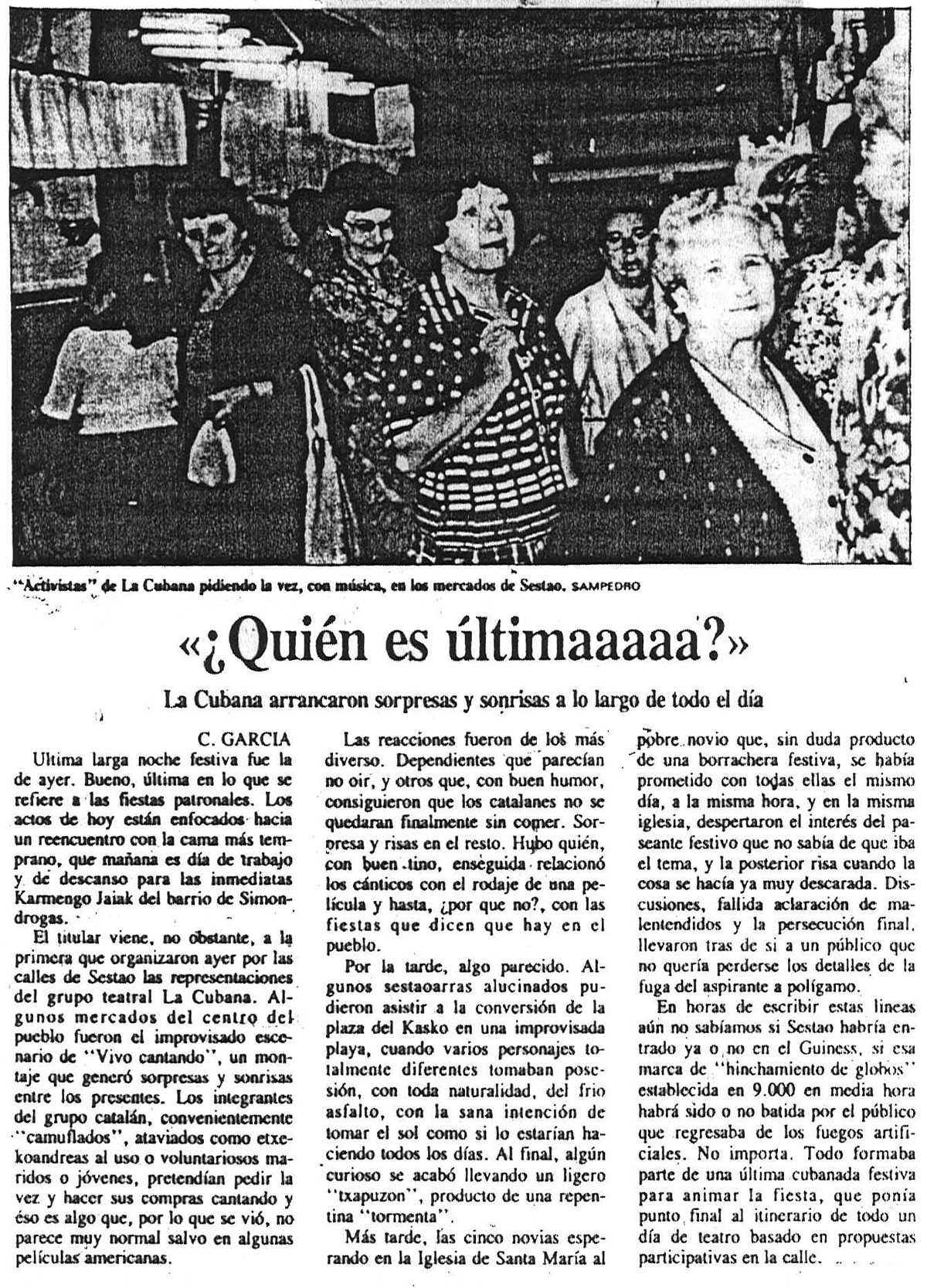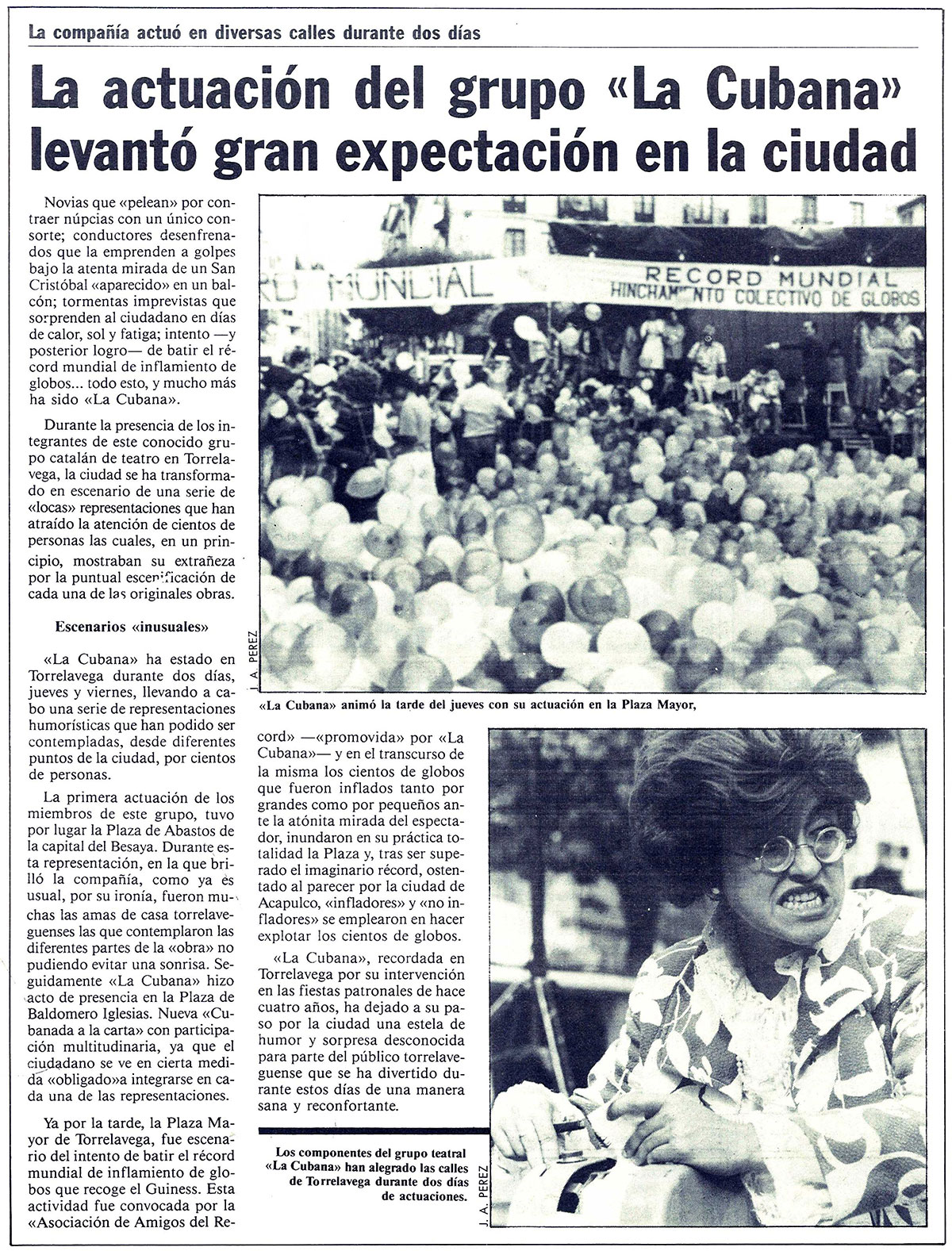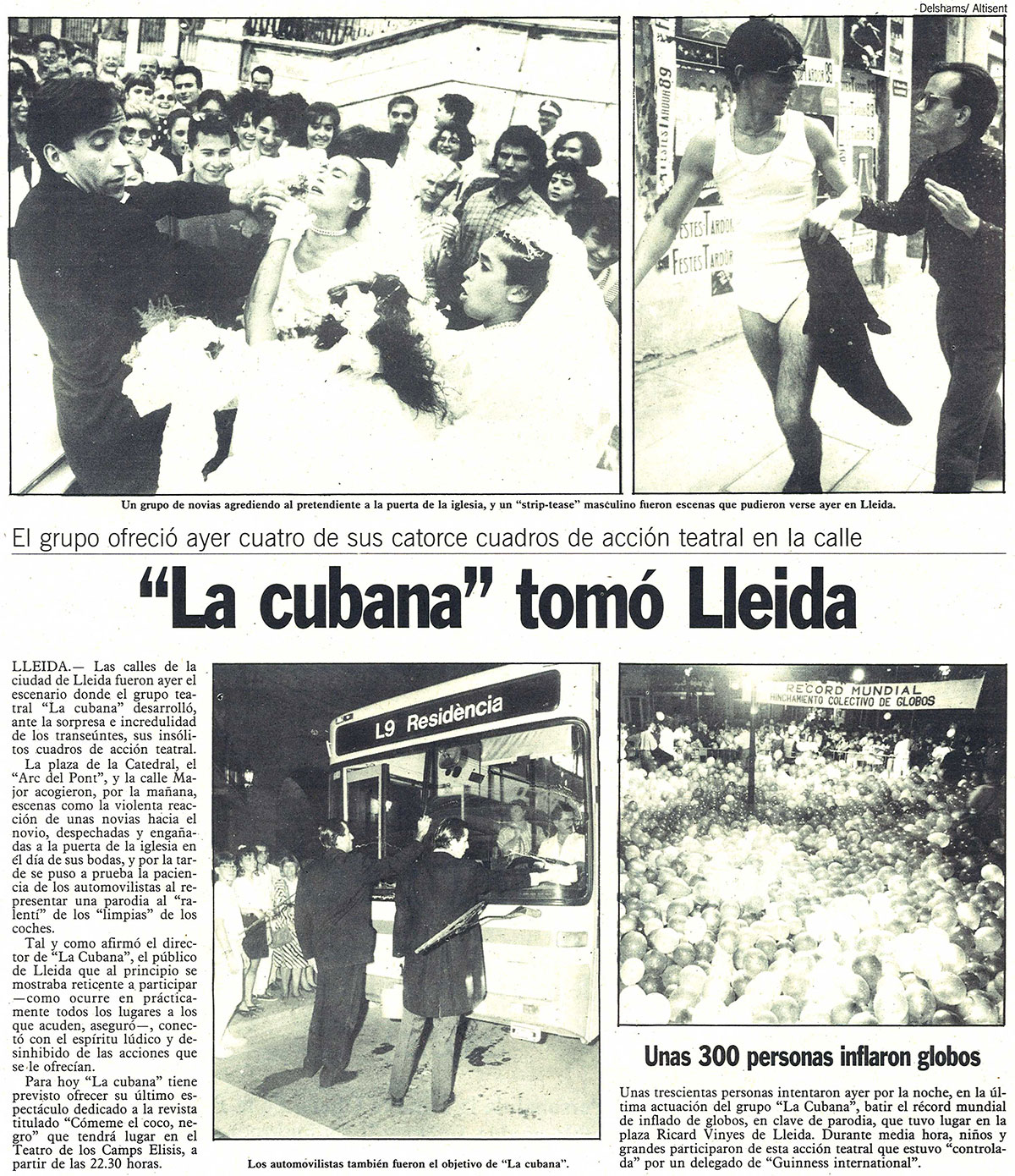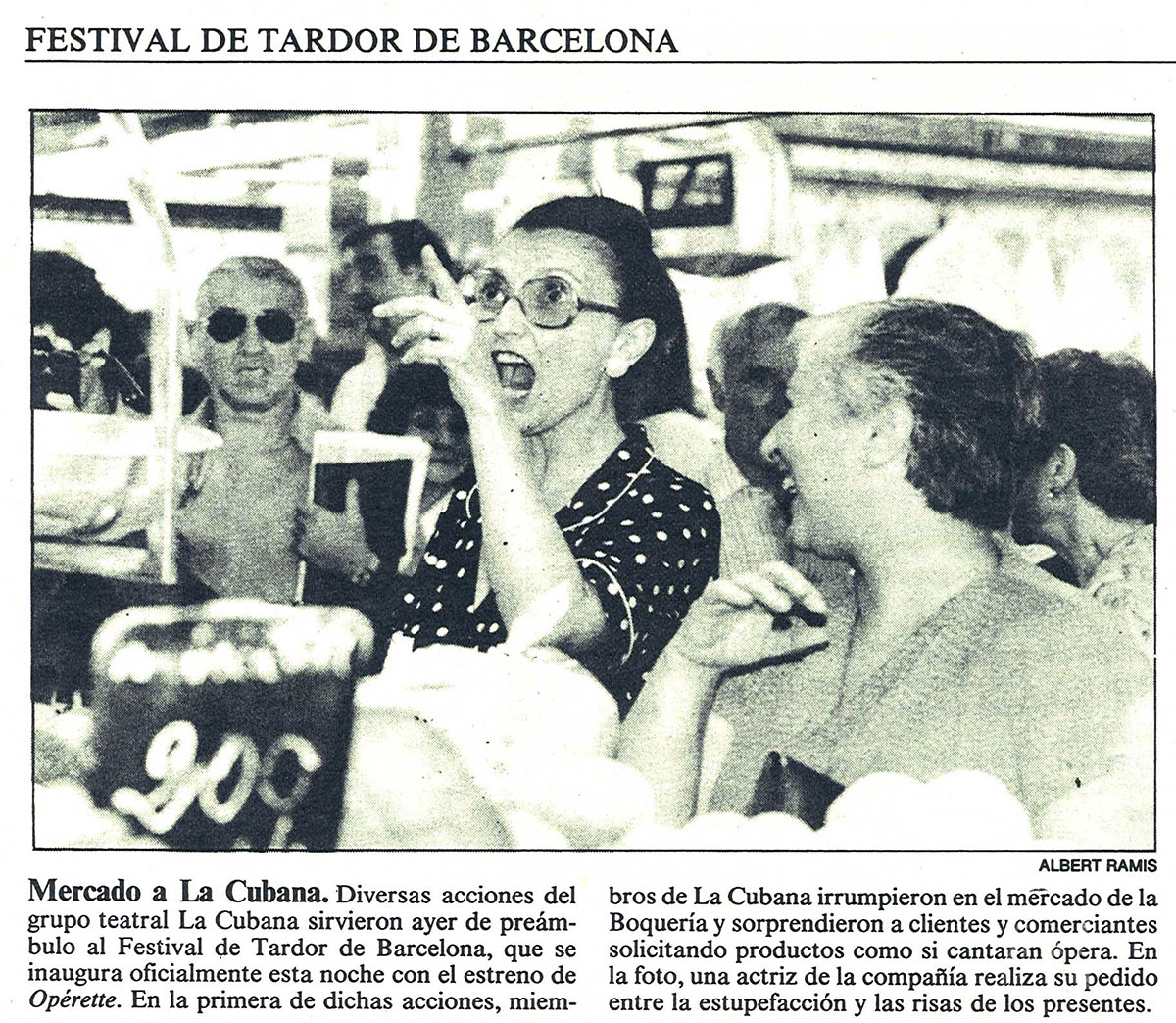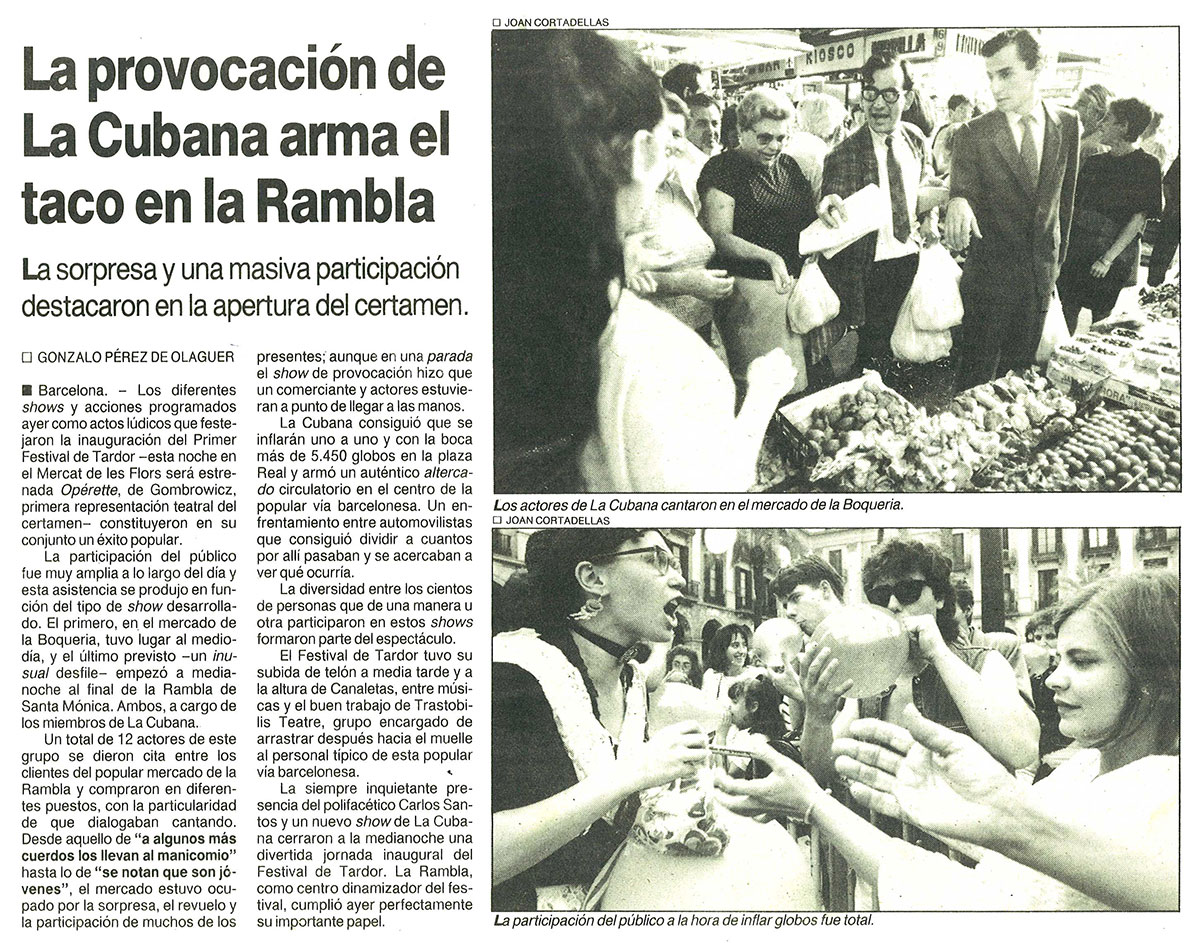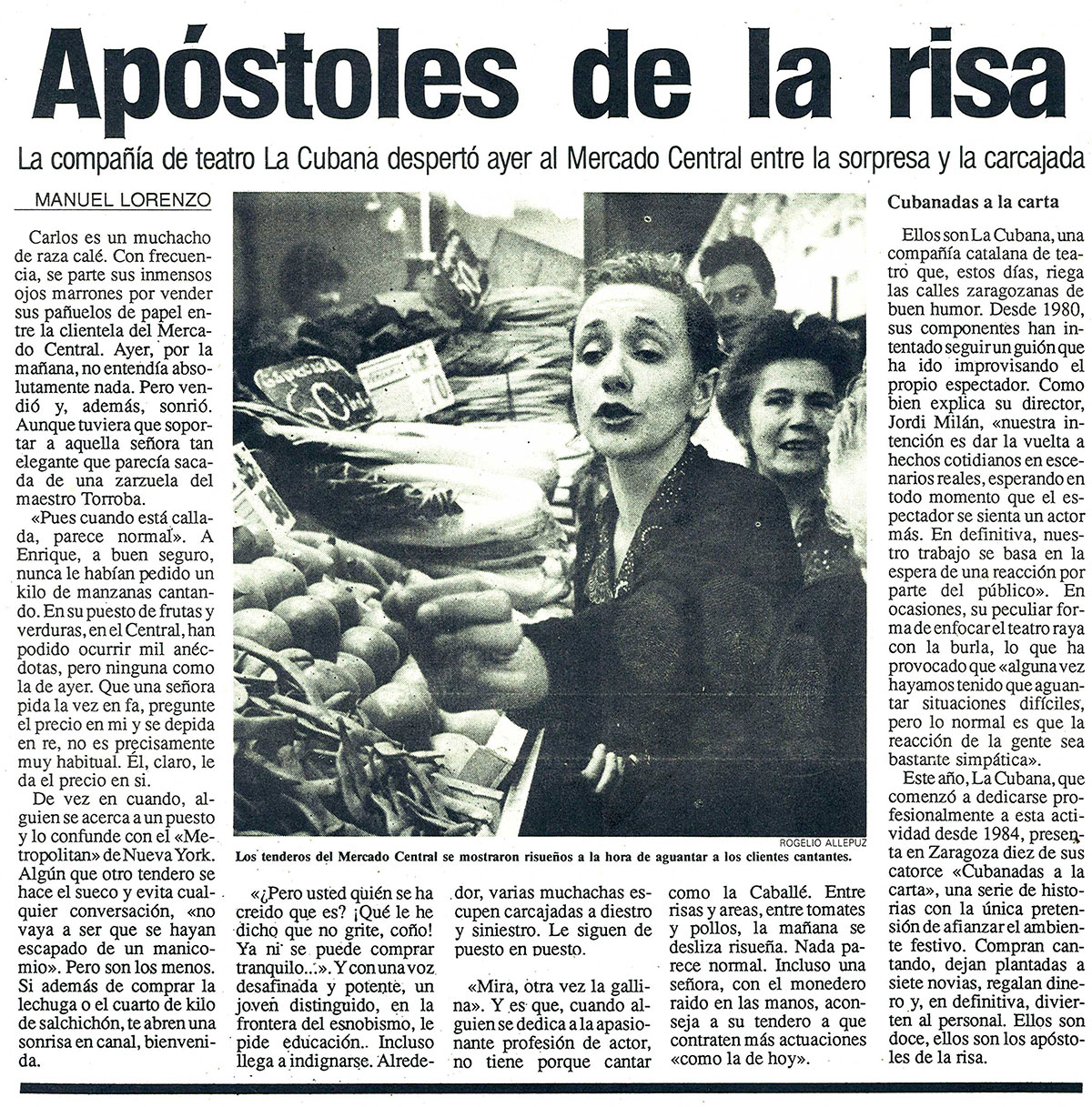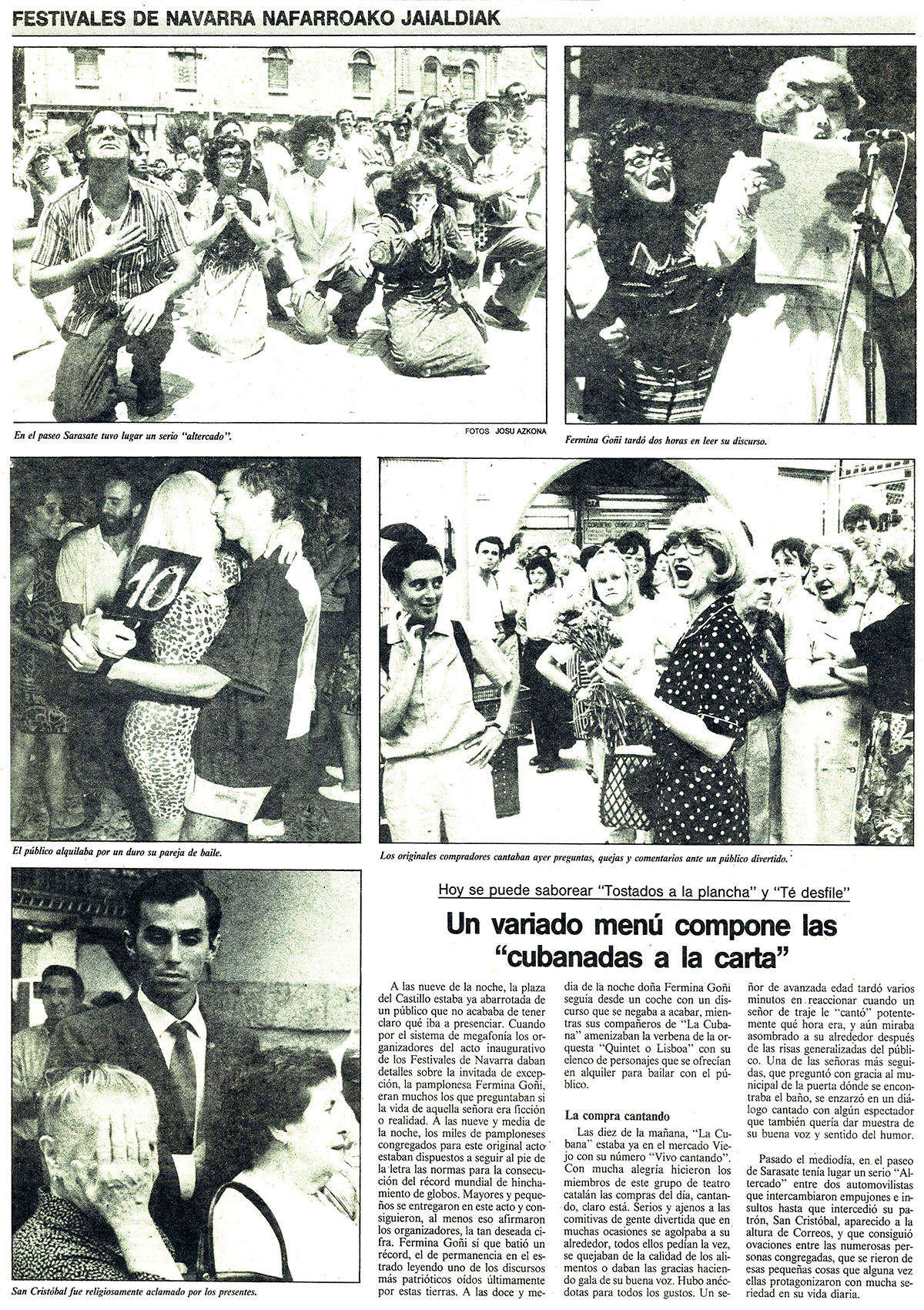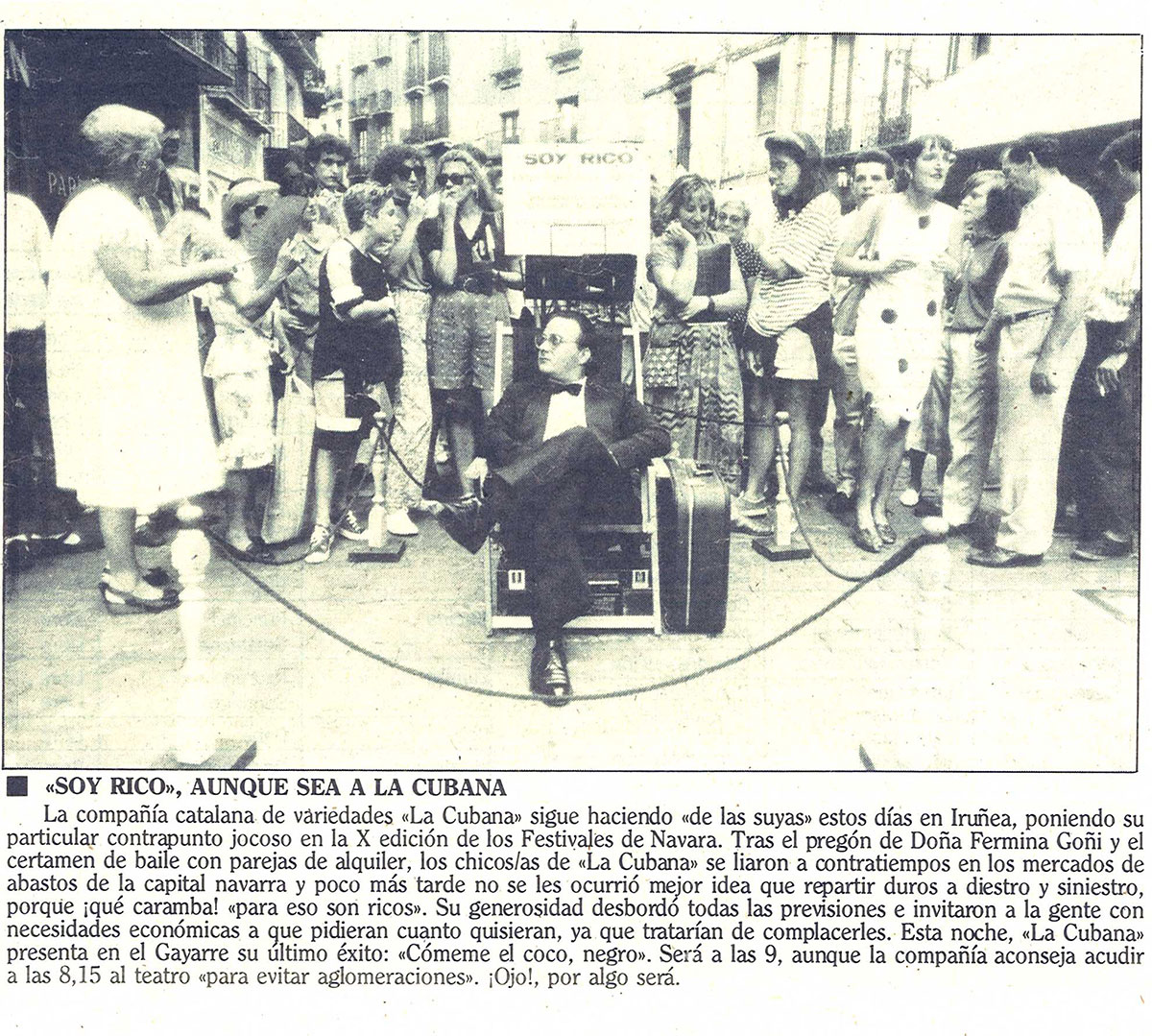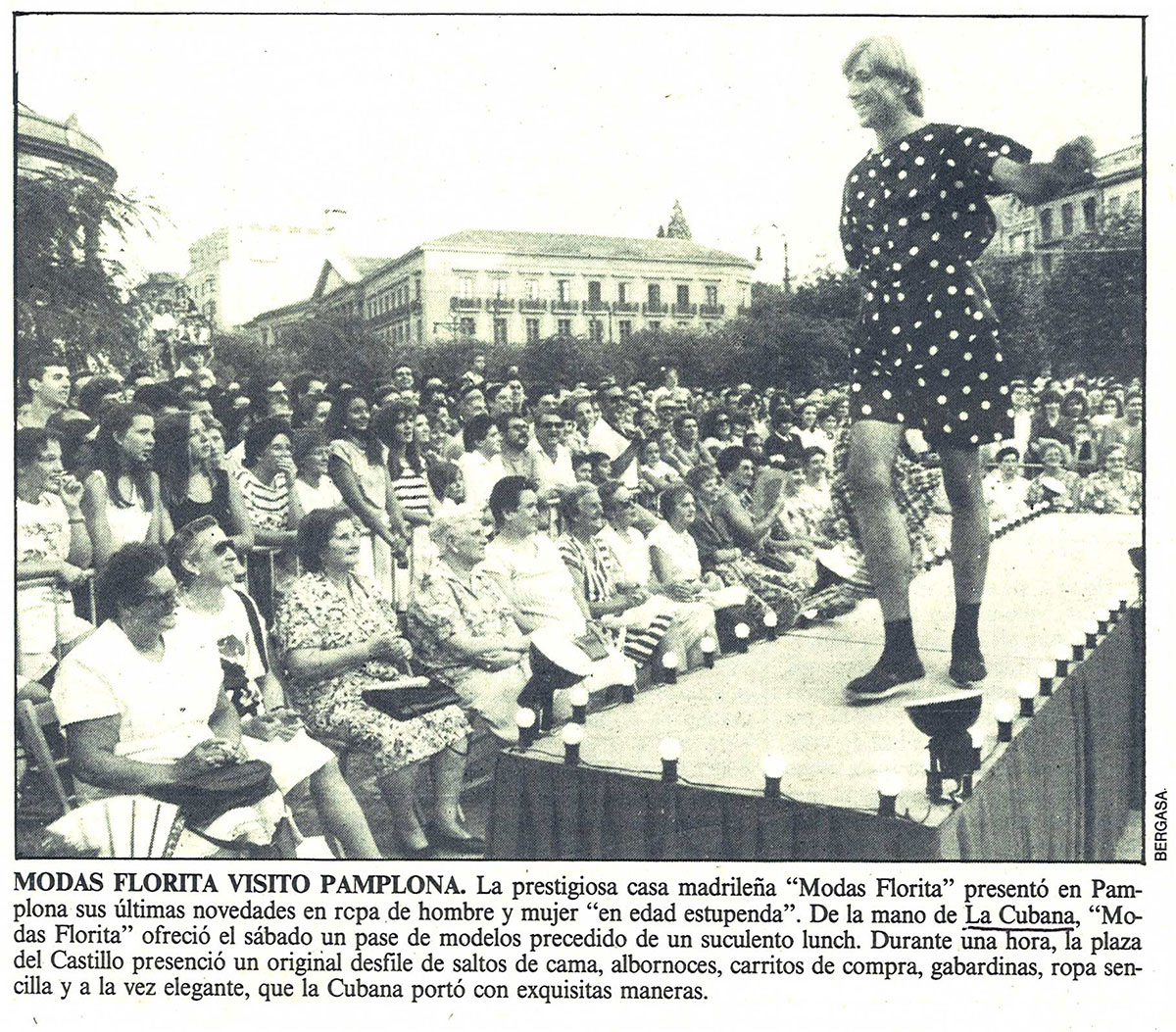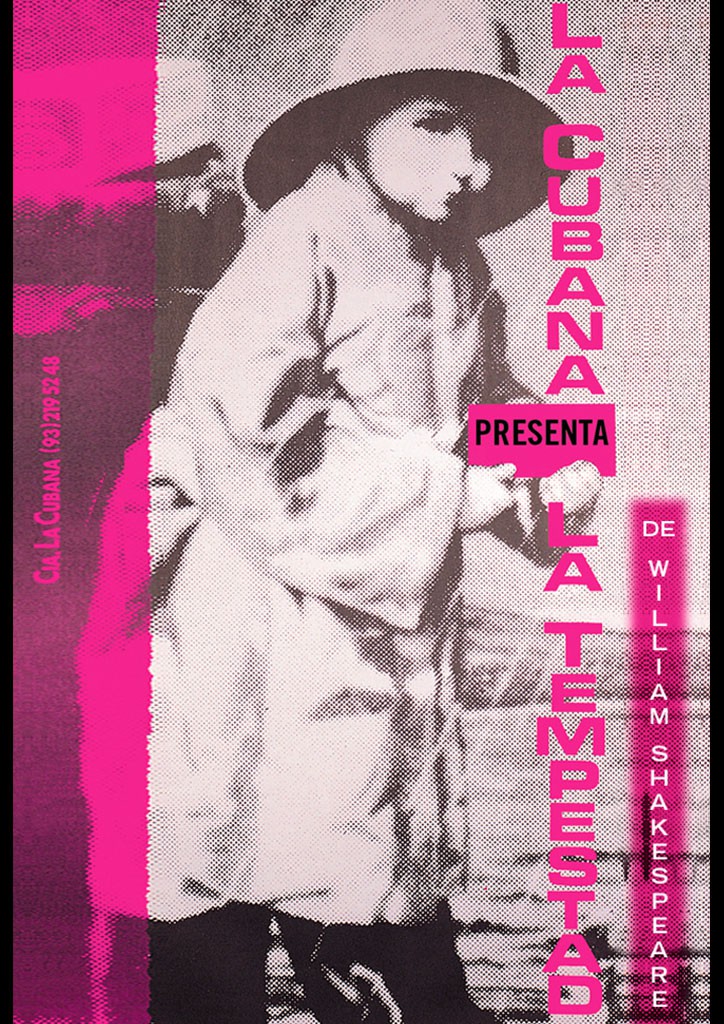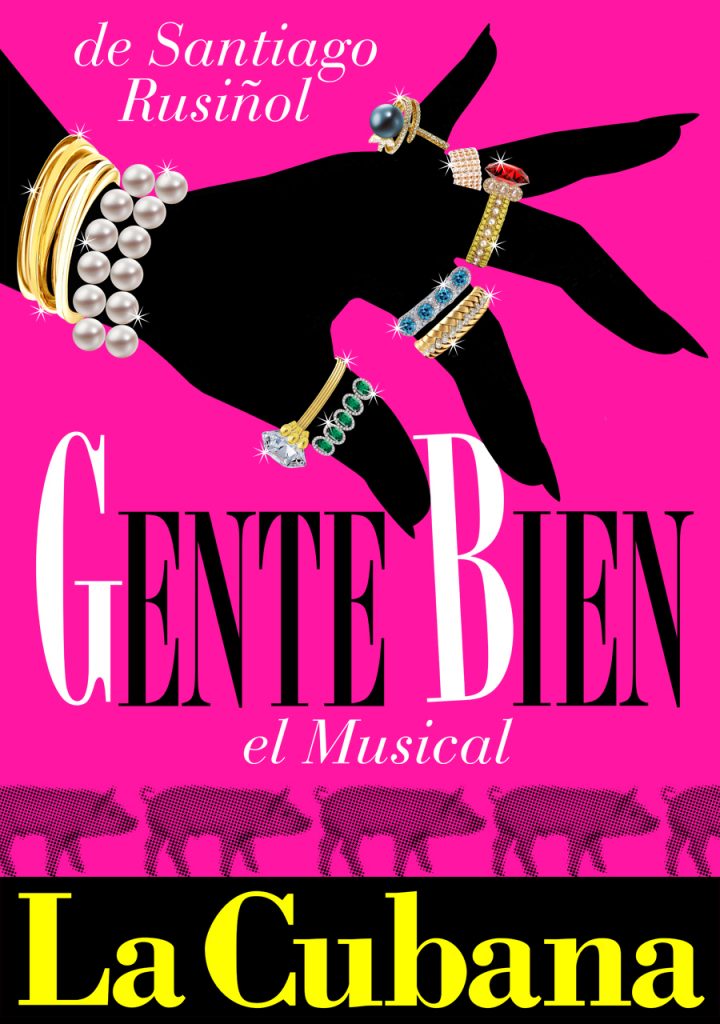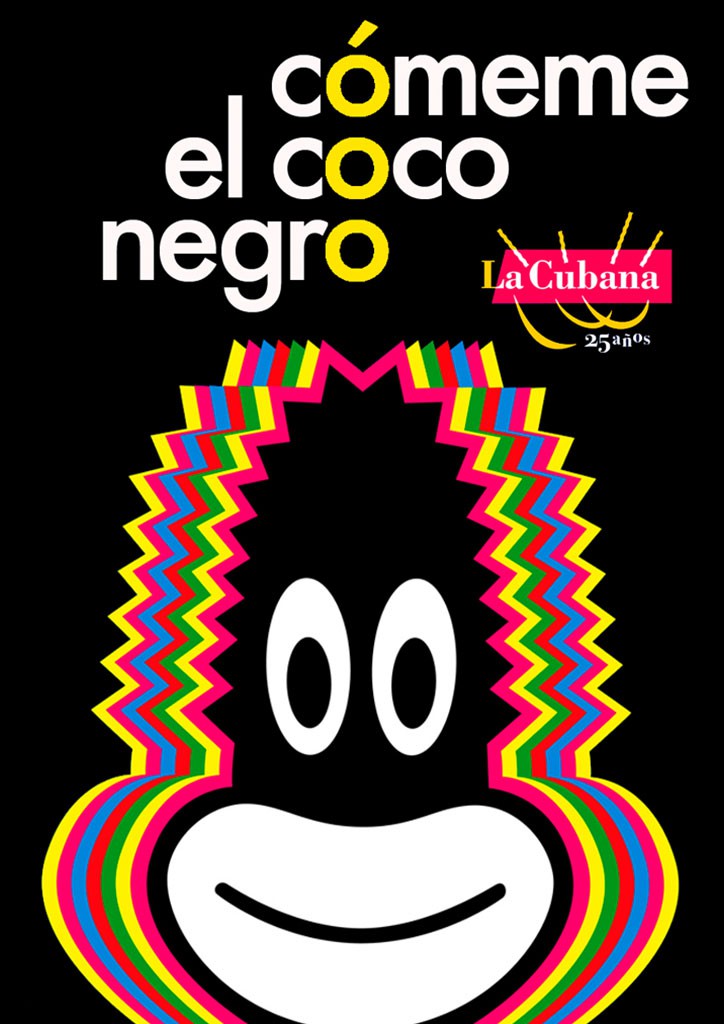Cubanades a La Carta
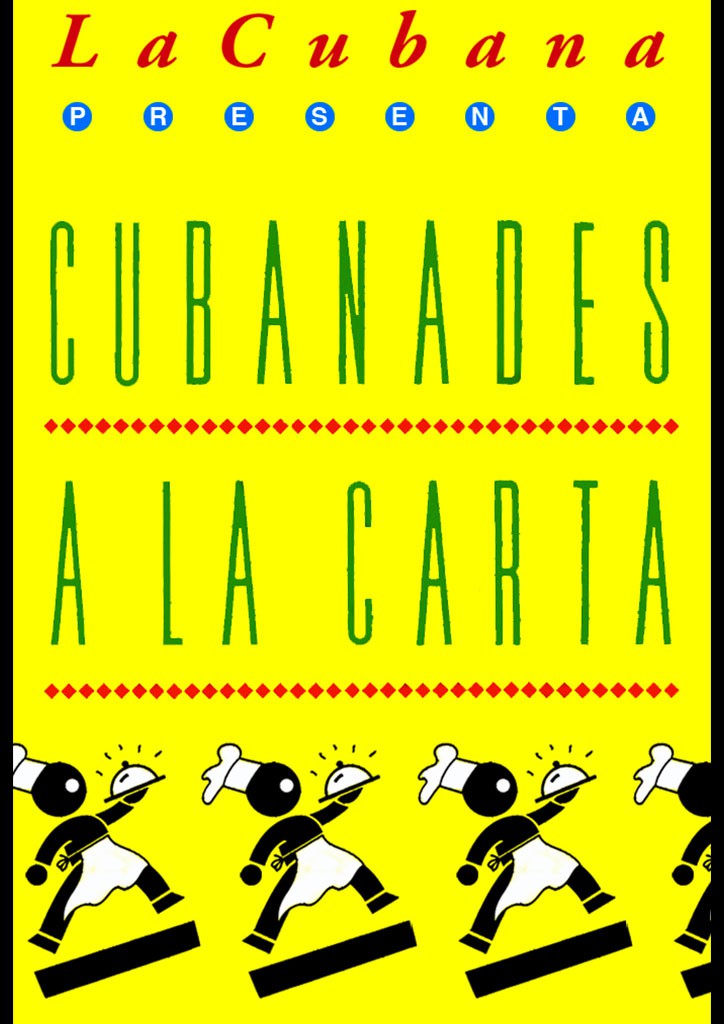
The trilogyAfter the Tempest (ending 1987), La Cubana suffered a small crisis. Many actors that quit their conventional jobs to join us in this adventure back in 1983 wished to go back to their old occupations and left the company. Only four of us remained in La Cubana: Mercè Comes, Carme Montornés, Mont Plans and Jordi Milán. We wanted to continue on, but: ¿how? Moreover, ¿doing what?
Obviously, we could not underestimate the aspects that had been decisive for La Cubana as it was. For instance, the experimenting on new adapted spaces for the theatre activity, the portrait and the homage to the daily incidents, the game, the surprise, the street actions, the audience involvement, etc. We enjoyed all of it, we wished for all of it. Well, then the best thing to do was to do it all: increase the range of actions and build a repertoire. To do a Ménage a trois, what was to do three shows that would be different one from the other and ready to be presented in three different places, where La Cubana would be able to do all it enjoyed most: Street theatre, conventional theatre, and above all, an involvement game. Therefore, the trilogy was created containing:
Cubanades a la carta (Cubanades on the menu) (1988) – Street theatre
Cómeme el coco, Negro (Eat my Cocoa, Nigger) (1989) – Drama inside a drama
Cubana, Marathon dancing (1992) – A participation show
Cubanades a la carta (Cubanades on the Menu)
Twelve theatre actions, following the line of Cubana’s Delikatessen, but quite more spectacular, born from a simple idea, in order to be able to present them individually. Presented as a culinary menu, the hiring part chooses on what it is believed to work better in its municipality. With the choice to have between three and five street performance a day.
Appetizer (in the morning)
QUÉ RISA, TÍA FELISA
VIVO CANTANDO
MUDANCES
First Course (at noon)
RÈCORD MUNDIAL D’INFLAMENT COL·LECTIU DE GLOBUS (World Record of Balloons Blowing)
TORRATS A LA PLANXA
SOLO ANTE EL PELIGRO
Main Course (in the afternoon)
YA SOMOS RICOS
LOS LIMPIAS
PARA “CASA Y MODA”
Deserts (at night)
NO ME MATES, CORAZÓN
ALTERCADO
TÉ – DESFILE
Que risa Tía Felisa (What a laugh, Tía Felisa)
In a market place, a supermarket, or else a bar terrace, a fortuitous happening, apparently spontaneous; the frantic laugh of a character and how its laugh gives rise to other people’s laugh, up until the improvised audience is also infected by this laughing disease.
Vivo Cantando (Singing Living)In a market place, just at the busiest hour, some buyers start their shopping deals singing, leaving the sellers and the usual customers flabbergasted. After a while, there is a kind of a revolution rising in the market place, creating a very special situation, because a good deal of people there find themselves singing their shop list too.
Mudances (Moving)A family removal van is driving through the city. The van is fully packed with the top crowded with suitcases, furniture, people, etc. The whole family is travelling in this peculiar van or else sitting in the very top of it. Furniture and family move as a whole. It is a walking joke going through the city.
World record of collective ballons blowingA civic organisation invites everybody to the main square to collaborate in the blowing of balloons, in order to achieve the “World Record of collective balloon blowing”; since doing so, the whole city will appear in the famous Guinness Record Book. They only need each person to inflate as much balloons as they can and place them in an area encircled by fences. Everybody starts blowing up the balloons. Once the record is broken, the organisation proposes to break yet another record: to explode all balloons in less than a minute. Everybody gets inside the fenced area and starts exploding balloons with their feet. This balloon explosion closes the event.
Torrats a la planxa (Toasted in the grill)Different characters walk through the street and unexpectedly, they unclothe and begin their sun bathing. After a while, this bit of road looks like a beach, the neighbours, when seeing such “panorama” starts making questions. The only explanation given is that the City Council, in order to clear the public swimming pools, has started with a pilot programme with this new idea of sun bathing. This new practice has many advantages: the asphalt sun, mixed with the pollution, gives the skin a more tanned tone. At the end, to everybody’s surprise, a great thunder is heard followed by a heavy storm. A summer storm soaks everyone who tries to escape from it.
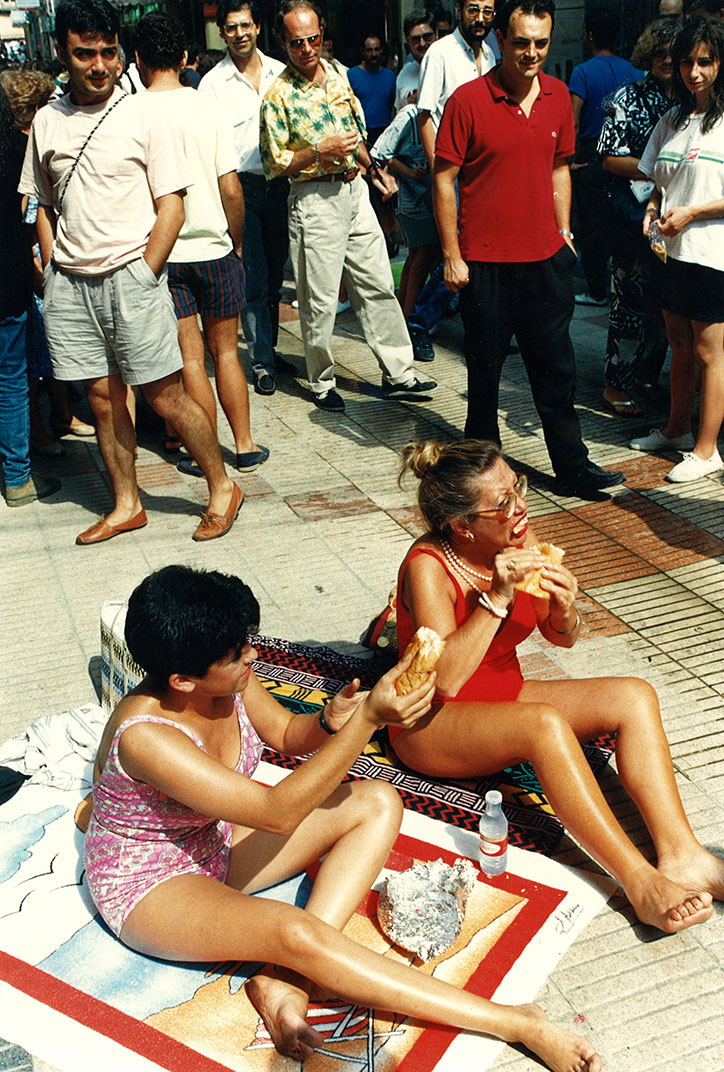
Solo ante el peligro (Alone facing danger)At a church’s entrance: A bride, with her white wedding dress, gets out from a taxi. The church door is closed. The woman, quite upset, explains to everybody around there that she is getting married in that church but the doors are closed. People around come to help her out. A bride creates at all times great expectation. After few minutes, turns up another bride who has also chosen that church for her wedding, and the same thing happens again and again up until there are seven desperate brides waiting in front of the church. As time goes they grow angry generating the audience involvement. At the end, a groom arrives. He promised to marry them all in the same church at the same time, in a drunken night. The brides run after the groom that has scorned them through the streets around.
Ya somos ricos (We are rich)Some people, elegantly dressed, are to be found in different places of an urban area. Each one is acting differently, but they all follow the same idea: to caricaturise the art of begging in the streets with its various typology. Stroked by good luck they find they are not poor anymore but rich, so that they stop begging and start giving back all the coins that the walkers had donated, treating them with the same pity as we usually treat beggars.
Los limpias (The cleaners)
Some characters dressed up elegantly, walk up to the busiest traffic road and begin to clean the glass windows of the cars in the traffic lights. After cleaning them perfectly and with great carefulness, the cleaners hand over some coins to the drivers.
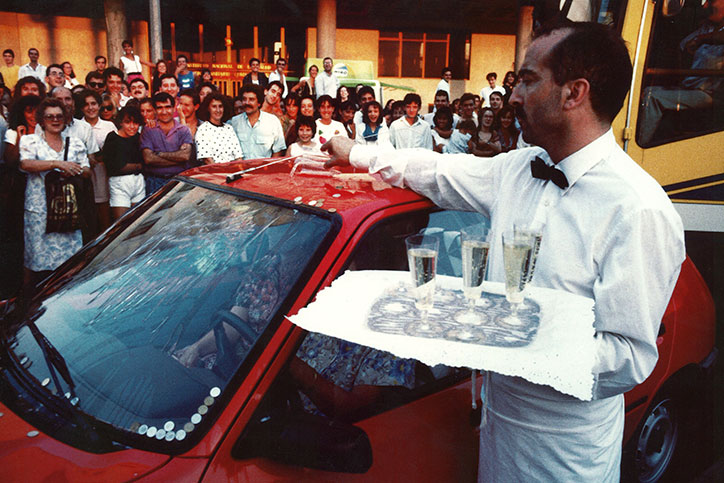
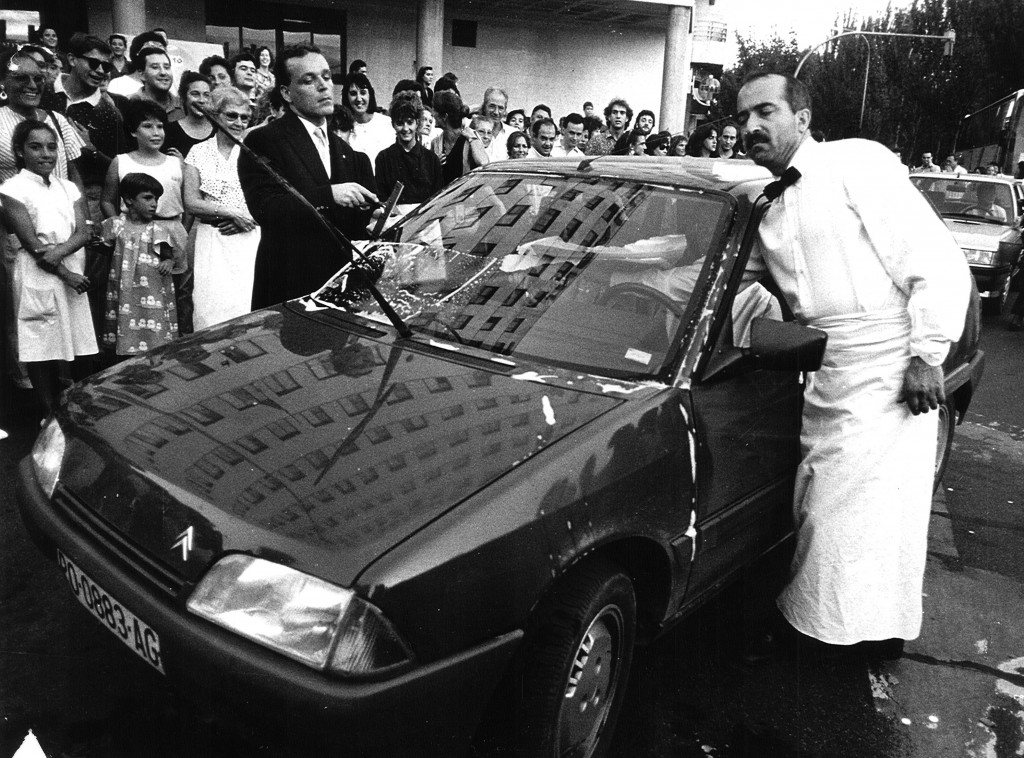
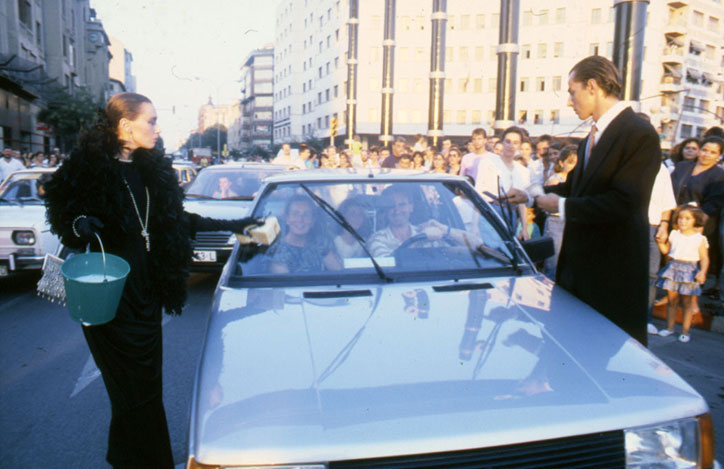
Para “Casa y Moda” (House and Fashion)The action of “posing” for a photo is often quite theatrical. Casa y Moda (House and Fashion), is a parody of a fashion report on the city. The model, the photographer and the stylists set up their improvised scenario, using the street furniture and involving everybody in, at the end, a surprise…
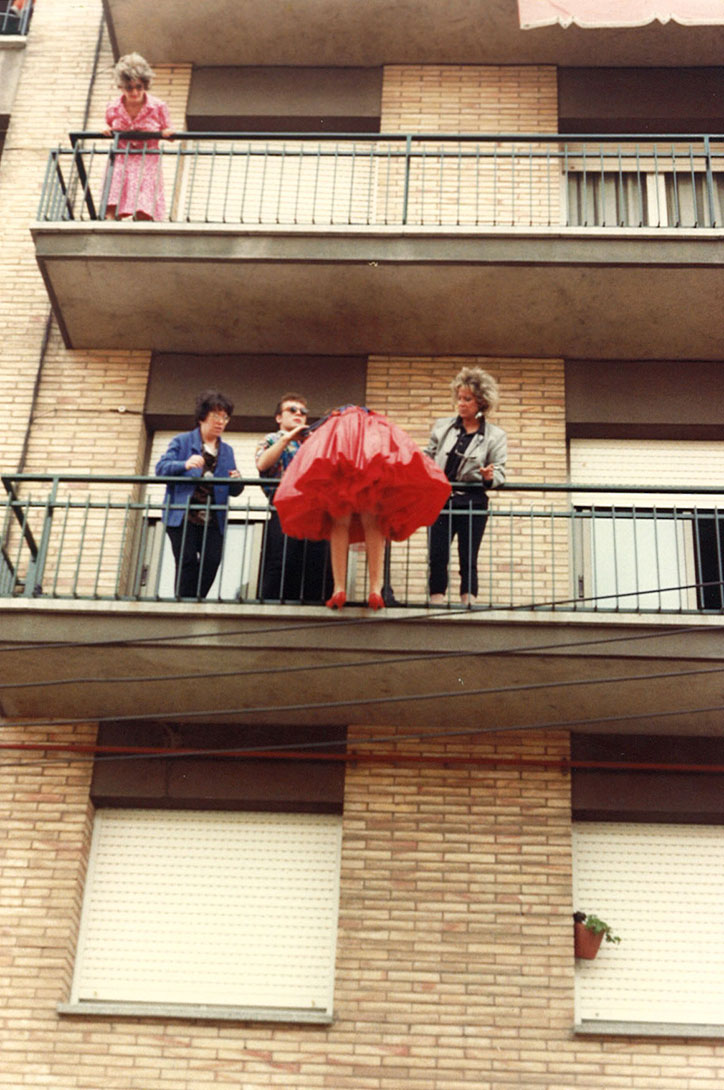
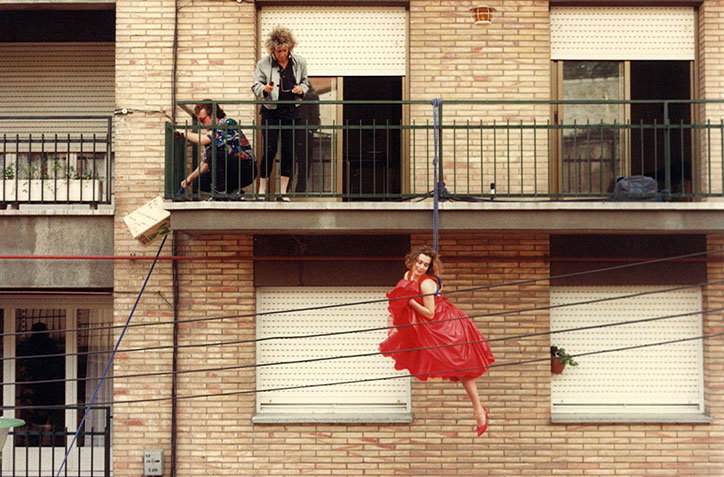
Tè-Desfile (Tea-Fashion Show)Fashion shows are, nowadays, great shows and are very theatrical. This is another fashion show. In a centric square, a fashion firm called “Modas Florita” is about to open a new shop and they want to show some of their models to the future costumers. The collection is presented as “Four Seasons”. The models are ordinary people, and the dresses are too…
The first row of seats will be occupied by women chosen from the general audience pretending they are guests of honour, they will have some tea and biscuits…
No me mates, corazón (Don’t kill me, my heart)A technical team starts shooting a movie out in the street. It is a normal shooting, much fuss for nothing, just to make a recording of one minute. The audience, in this case, acts as they always do in this kind of situations: they comment and criticize, as a real audience would do. In a natural emplacement the audience can witness the vicissitudes of a film shooting.
“Altercao” (Altercation)Two crowded cars are challenging each other and nobody knows why. In a chosen place, one of the drivers will stop abruptly and all the occupants come out, following the argument, growing quickly. The argument becomes a battle, and when reaching the top… a heavenly music is heard and, from a quite visible roof, Saint Cristopher patron of Drivers appears and establishes peace: He throws religious pictures, key holders and pins of himself. They all go back to their cars as if nothing had ever happened, and settle for a paella the following Sunday.
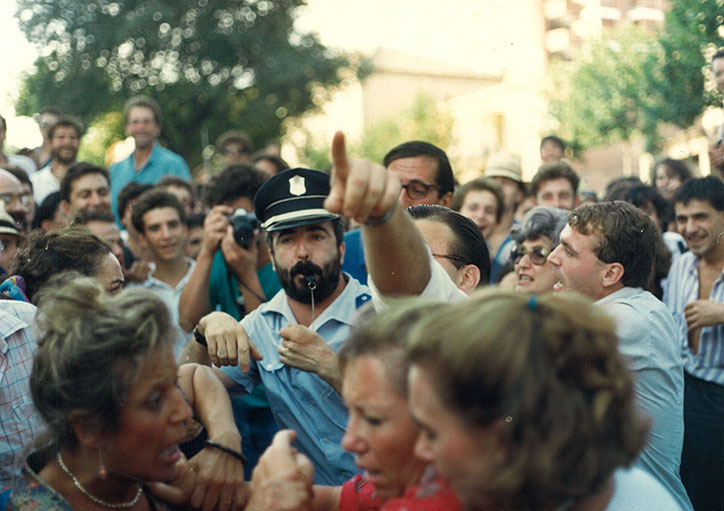
PREMIÈRE: Sitges and Tàrrega Theatre Festivals, 1988.
PLACES WHERE IT HAS BEEN PERFORMED: Sitges, Tàrrega, Santiago de Compostela, Sant Feliu, Almeria, Manresa, Molina Segura, Torelló, Fraga, Valls, Igualada, Molins de Rei, Vilanova i la Geltrú, Torrellobeta, San Sebastián, Irún, Logronyo, Roses, L’Hospitalet de Llobregat, Ripollet, Palafrugell, Vila-Real, Reus, Cornellà de Llobregat, Sestao, Albacete, Burgos, Alsasua, Marin, Ribadavia, Andorra, Banyoles, Torrelavega, Mollet del Vallès, La Seu d’Urgell, Viladecans, Calahorra, Manzanares, Mataró, Tarragona, Lleida, Barcelona, Gandia, Saragossa, Pamplona, Palma de Mallorca, La Laguna.
PERIOD: 1988-1990
PERFORMANCES: 46
SPECTATORS: 202.000
CREATED BY: Jordi Milán
CAST:
Carme Montornés
Mercè Comes
Mont Plans
Anna Barrachina
Sílvia Aleacar
Jordi Milán
Santi Millán
José Corbacho
Jaume Baucis
Ferran Botifoll
Miquel Crespi
DIRECTOR: Jordi Milán
VIVO CANTANDO (Singing Living)
There were many surreal moments, when we were there, singing alone, everybody laughed and sung with us. Nevertheless, once we had left the place they usually went back to business leaving a strange feeling of emptiness. Generally, the sellers used to join us and sang with us or else acted and spoke to us as if we were foreigners. There used to be an overall feeling of playfulness, even though, every now and again, some actors had to leave the place with the owner or the seller running after them.
WORLD RECORD OF COLLECTIVE BALLOONS BLOWING
A civic organisation invites everybody to the main square to collaborate in the blowing of balloons, in order to achieve the “World Record of collective balloon blowing”; since doing so, the whole city will appear in the famous Guinness Record Book. They only need each person to inflate as much balloons as they can and place them in an area encircled by fences. Everybody starts blowing up the balloons. Once the record is broken, the organisation proposes to break yet another record: to explode all balloons in less than a minute. Everybody gets inside the fenced area and starts exploding balloons with their feet. This balloon explosion closes the event.
YA SOMOS RICOS (We are rich)
It was an action were we used to occupy a whole avenue, spreading the actors all the way through. Mercè Comes and Miquel Crespi dressed up as trileros (characteristic Spanish cheaters) who on top of the cardboard box they played this traditional game of hiding a little ball inside one of the three caps. The audience always guessed well and won, and they were given the old golden Spanish coin called “Rubia” (blond). At a precise moment someone had to say out loud: “Water!” (a word used to alert the cheaters that the police is coming). And what was a cardboard box changed to a small bar counter were the actors offered water, sparkling or spring, to continue on with the game later on. In Almería, two camouflaged policemen, quite uninformed, when hearing “Water!” arrested the actors, ignoring their complaints. The actors, with great merit, went together with the police. All along the avenue to the Police Station they found many other people dressing similarly and giving out “blonds” to everyone there. The policemen’s faces were growing colourless, followed by an audience that believed that was part of the show. The policemen couldn’t find the way to reverse the situation.
LOS LIMPIAS (The cleaners)
The action always started on a very busy crossroad on the city centre. The characters, with their best clothes and accompanied by some Albinoni’s music, started blocking the cars. They cleaned their glasses and gave them money. If the driver reacted aggressively, the actor would place himself in front of the car to stop it. Once, Santi Millán stood in front of a car whose driver was very nervous, and who couldn’t stop hooting. He did not stop the car at all and rushed upon the actor. He had him sitting in the top, but the actor did not give in. At the end, once in the city’s outskirts, the driver, tired, stopped the car. The actor came down and walked his way back to the city centre.
